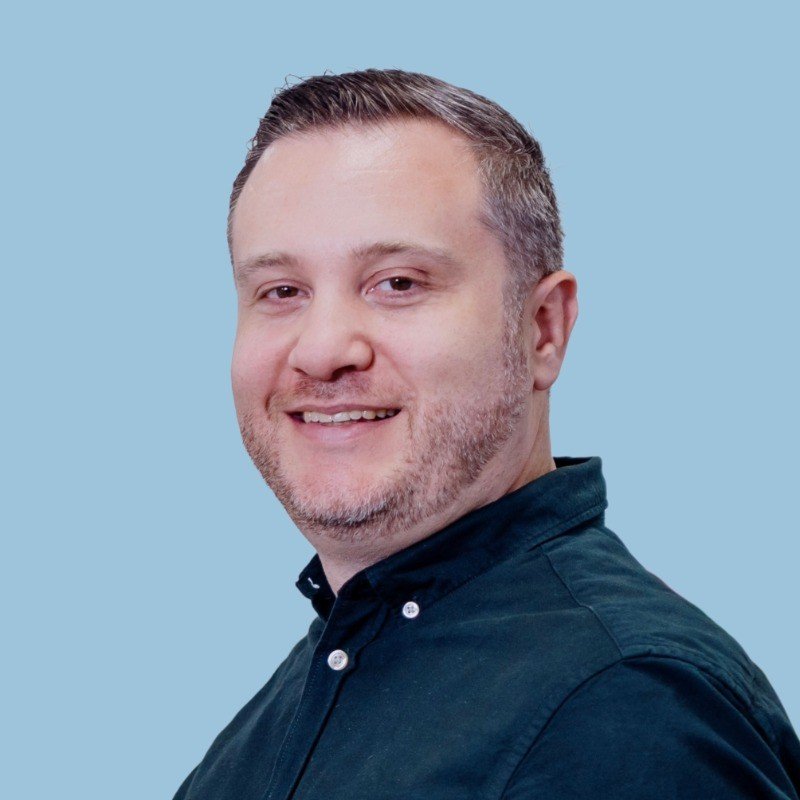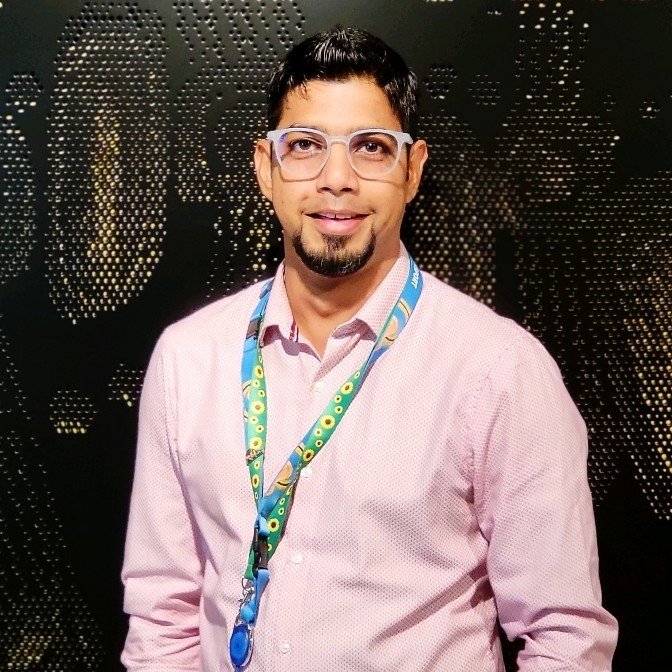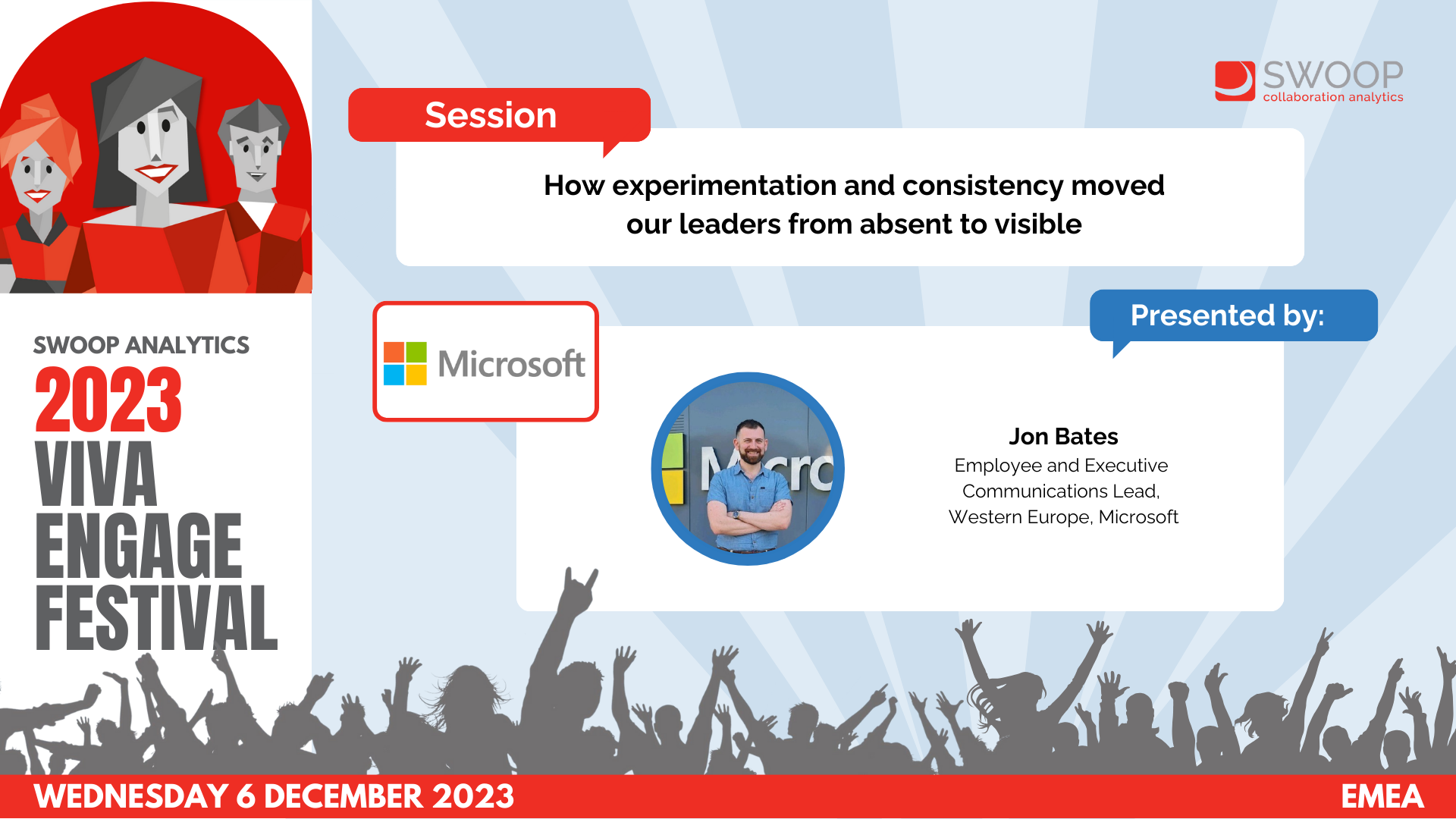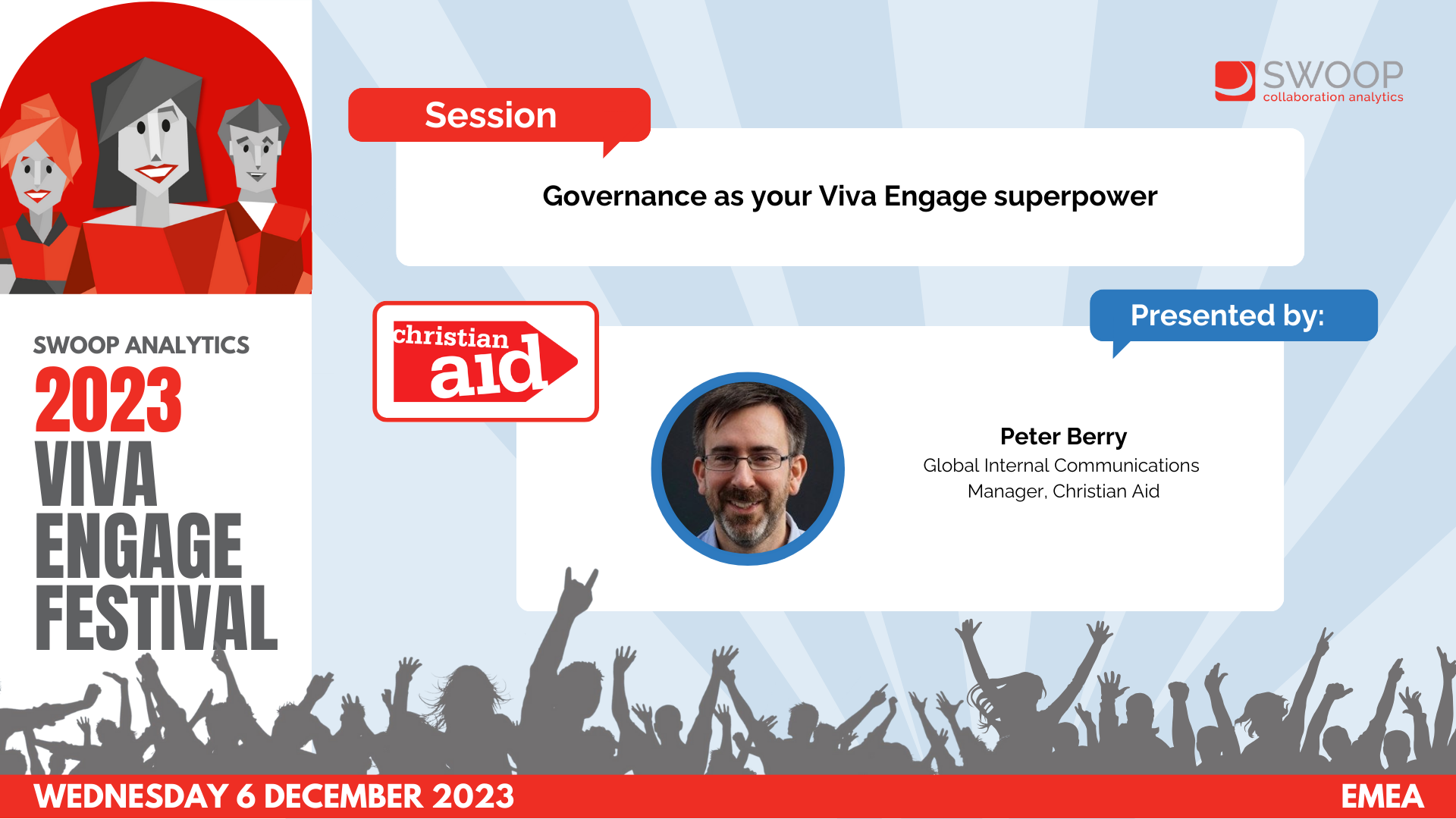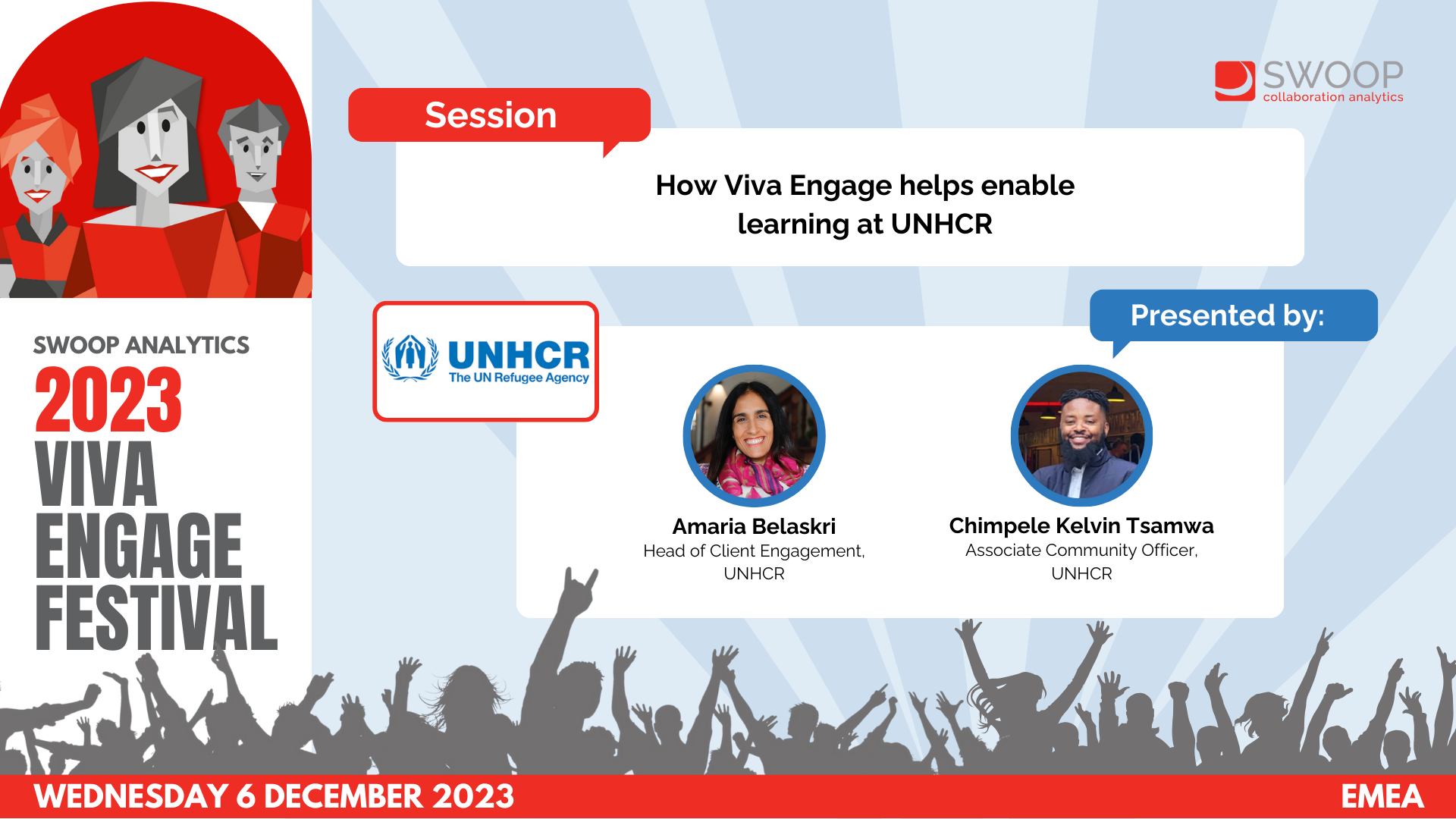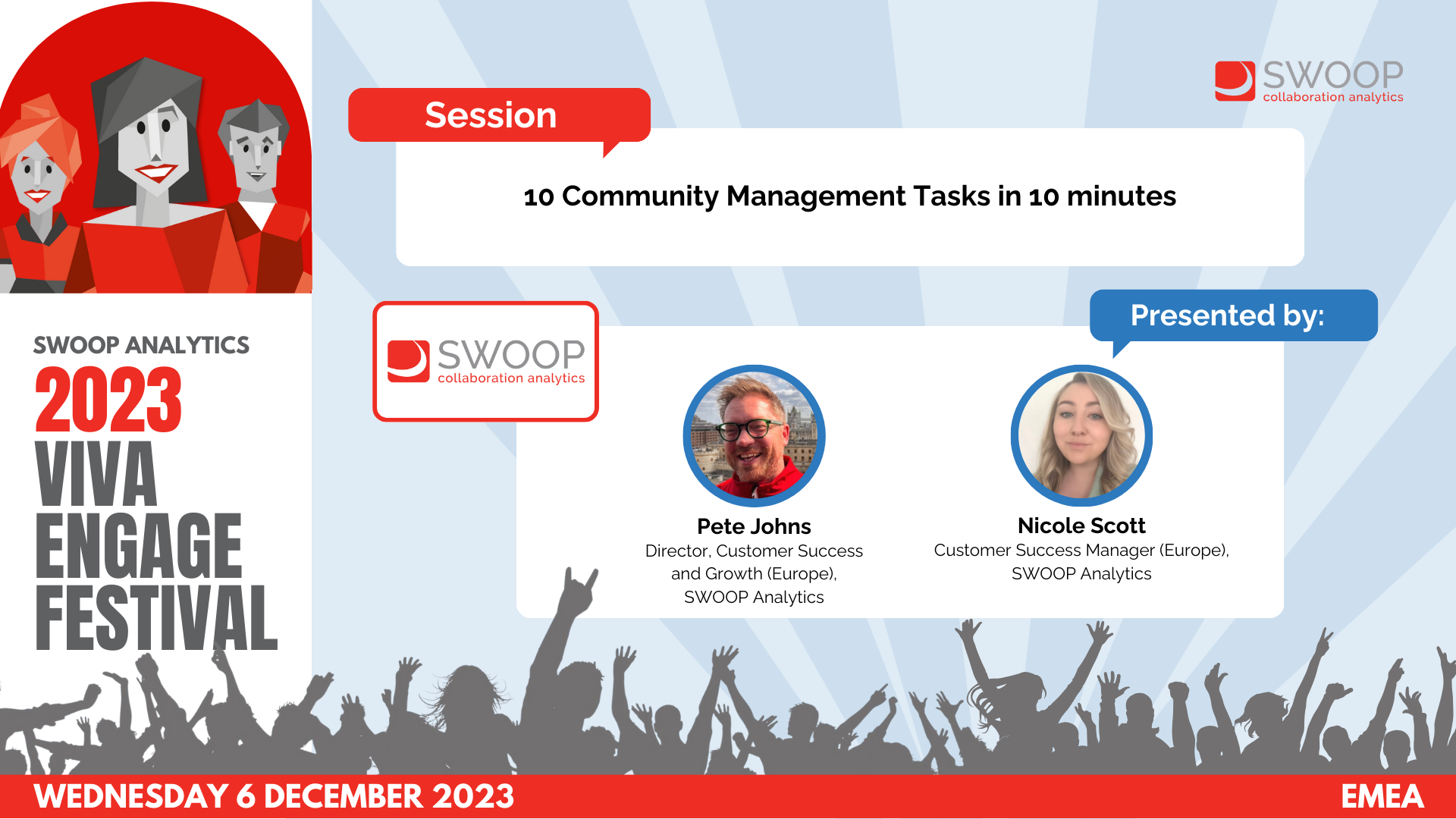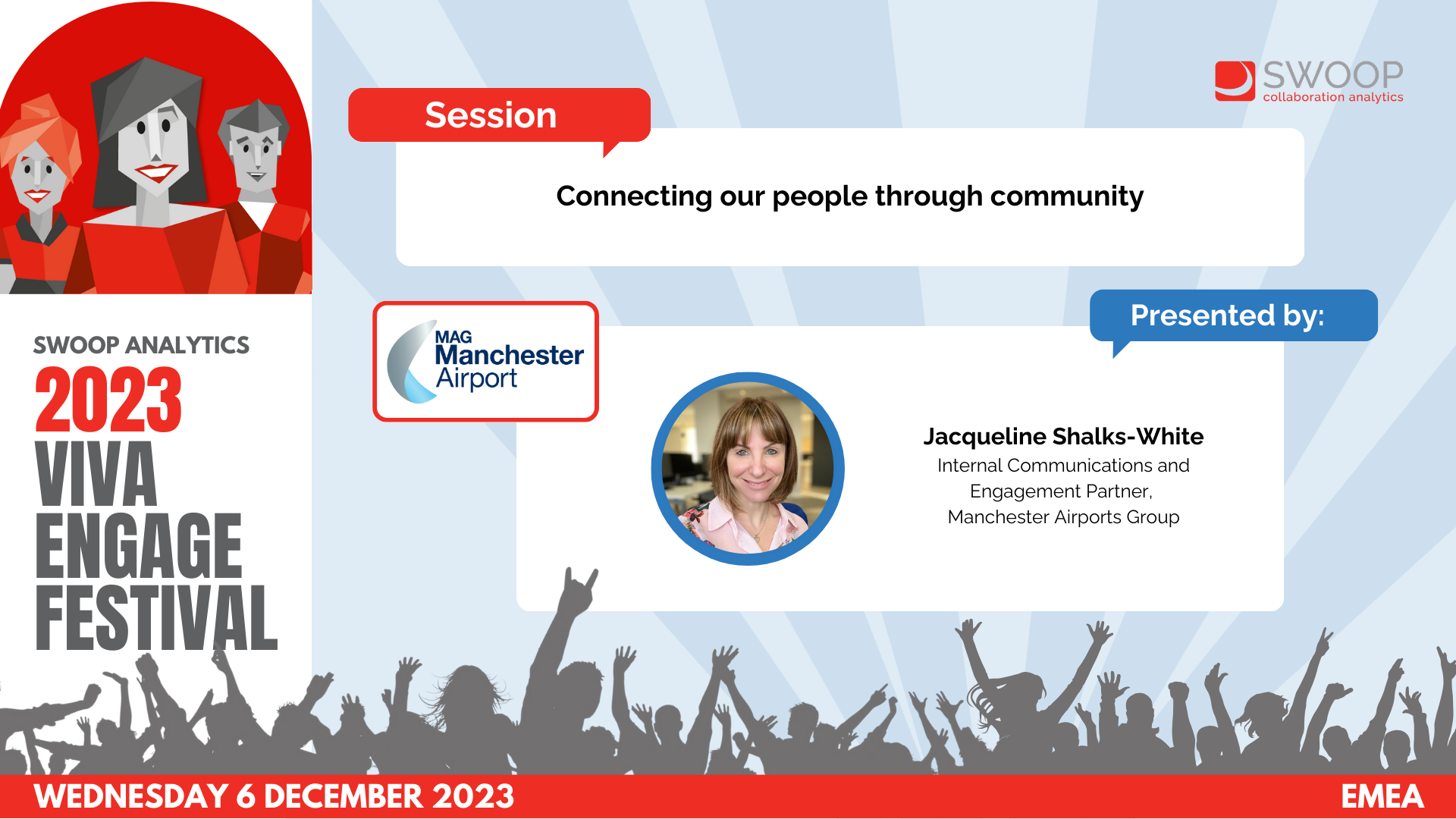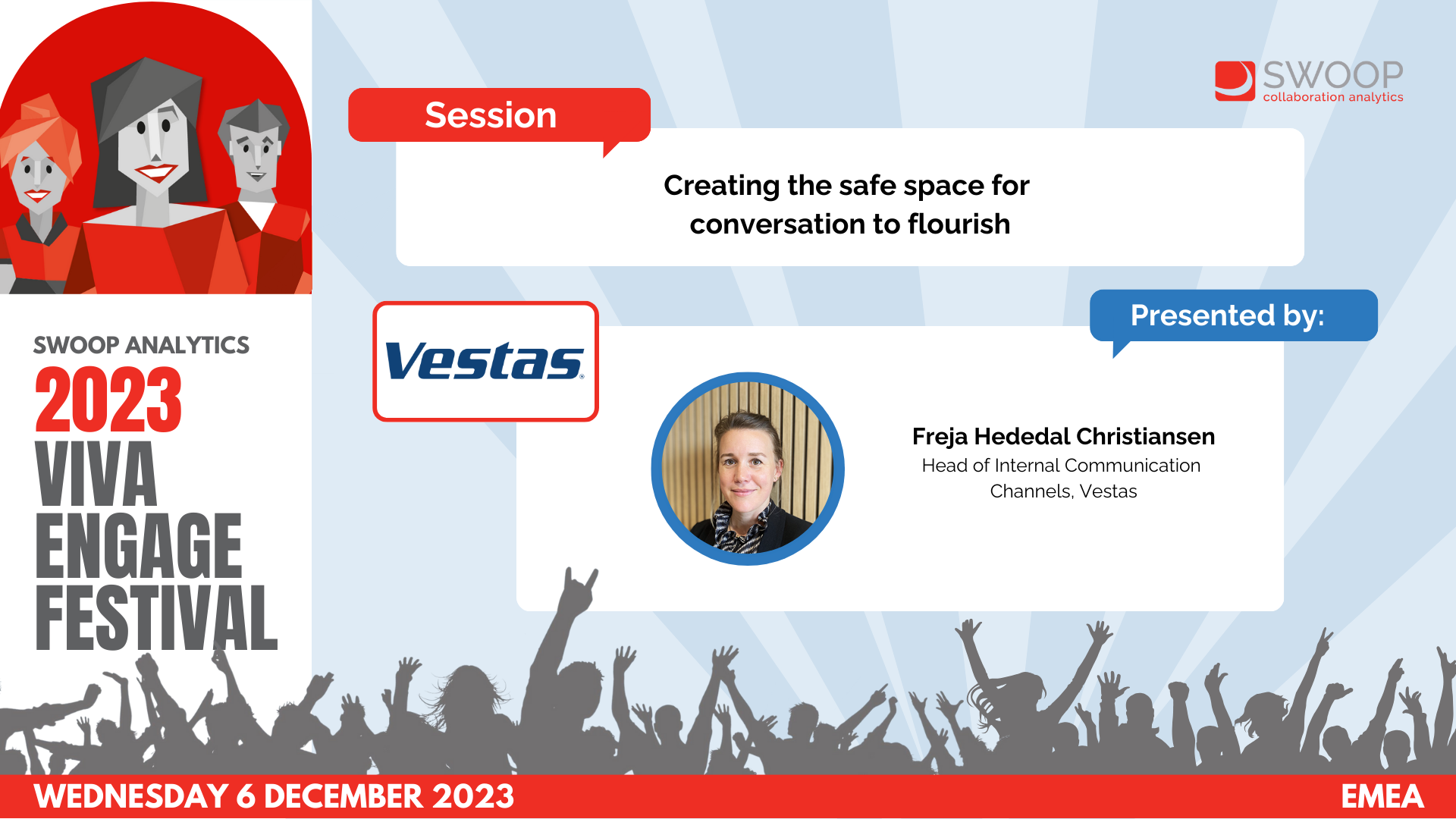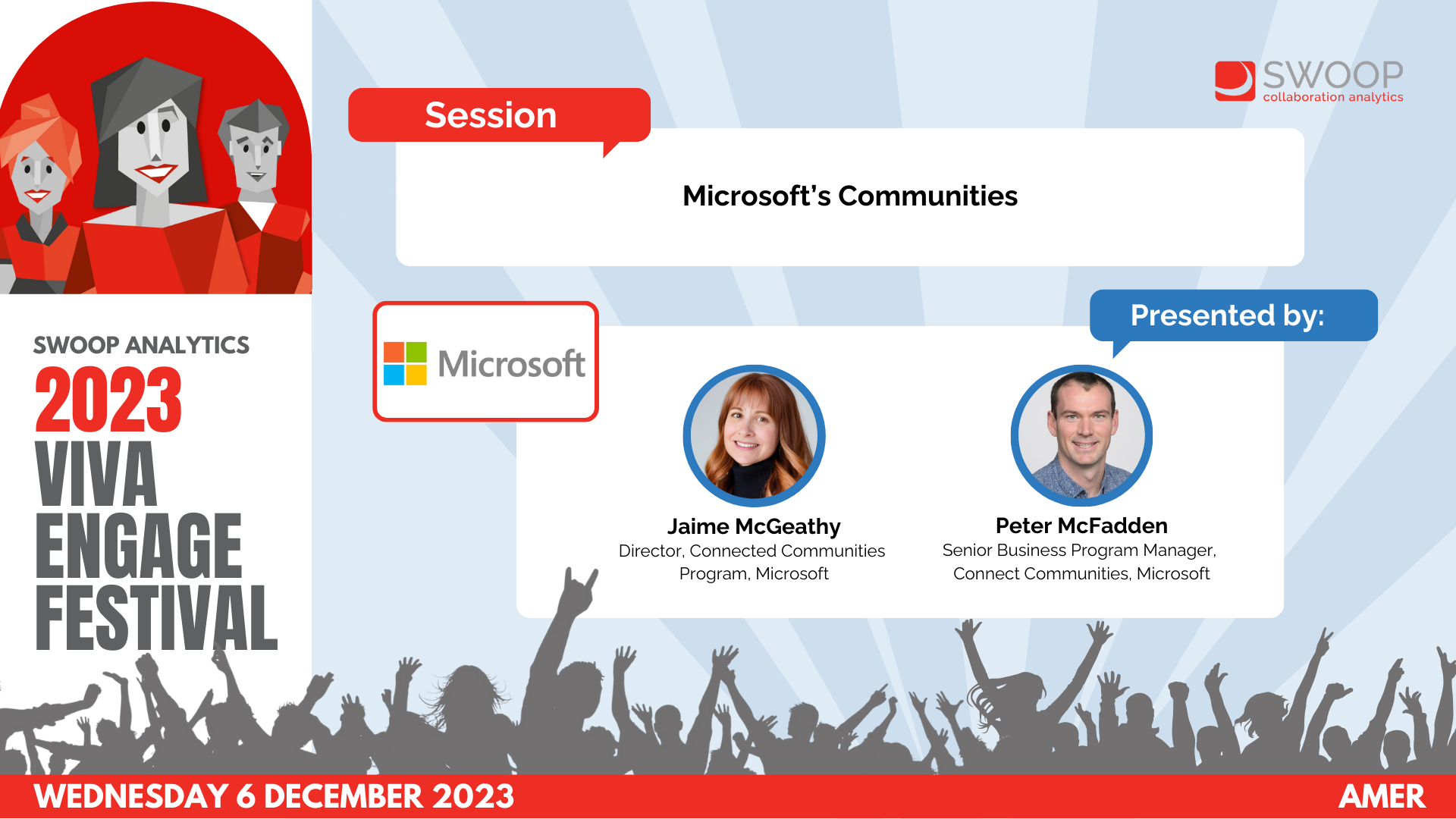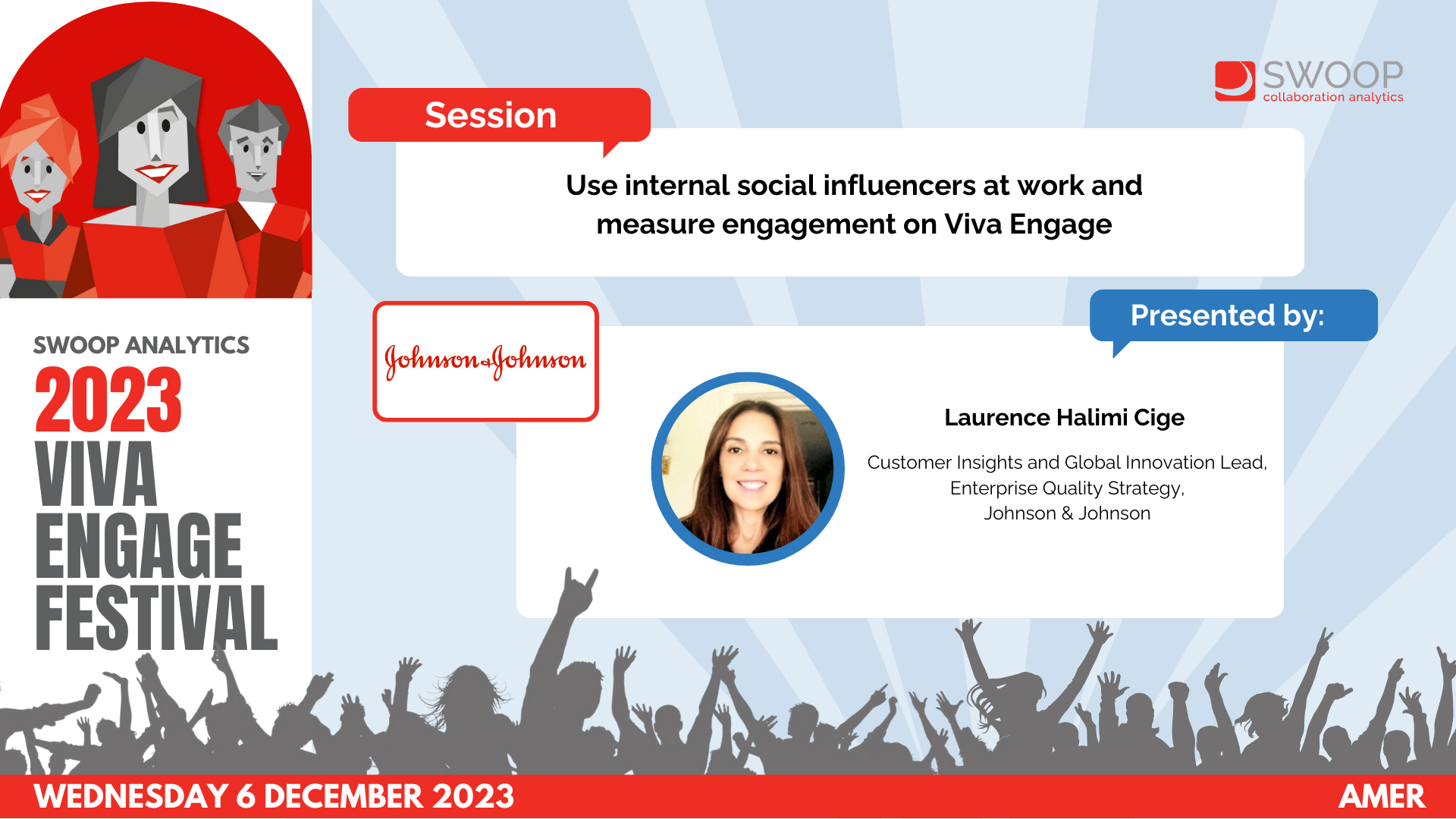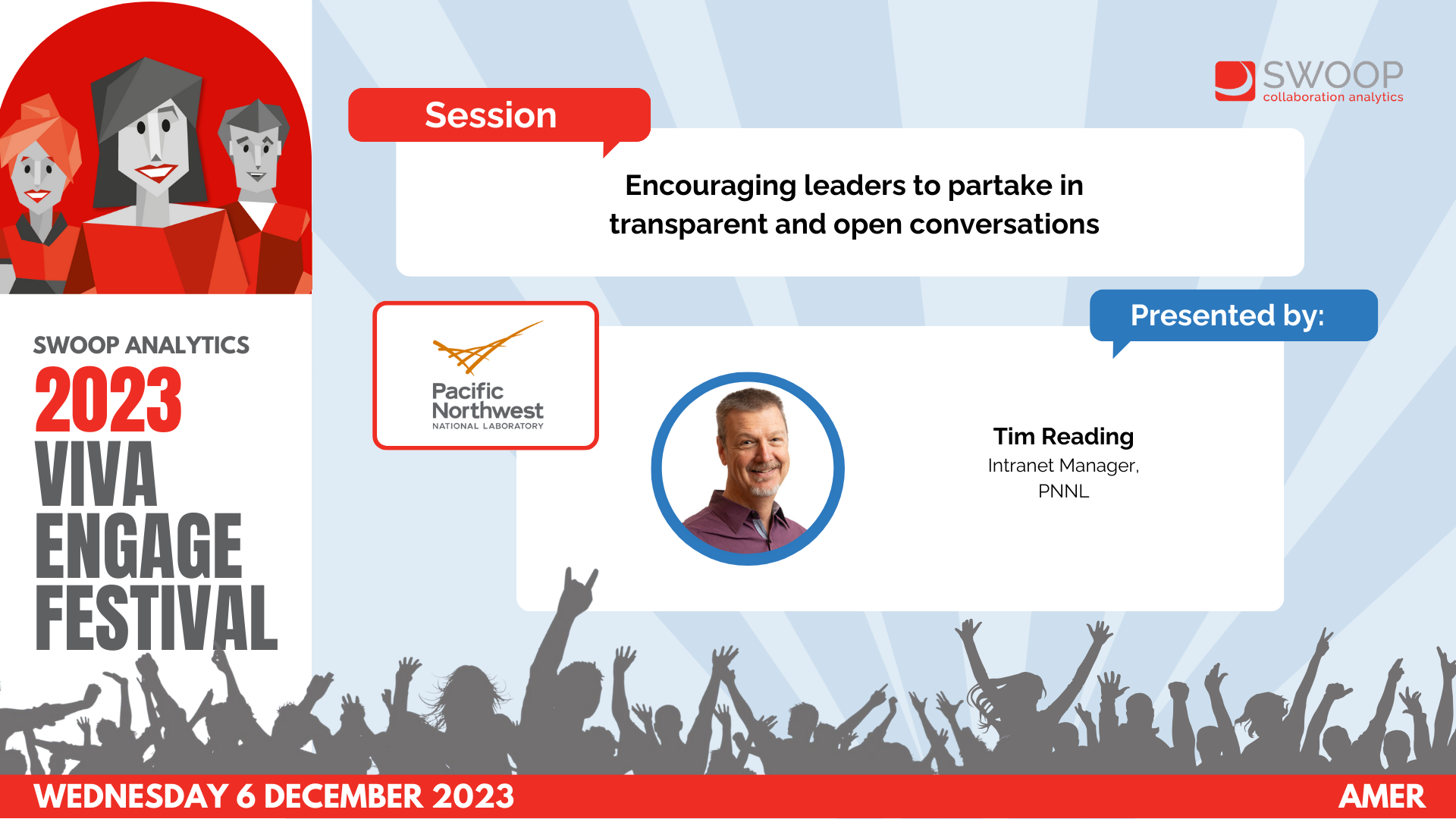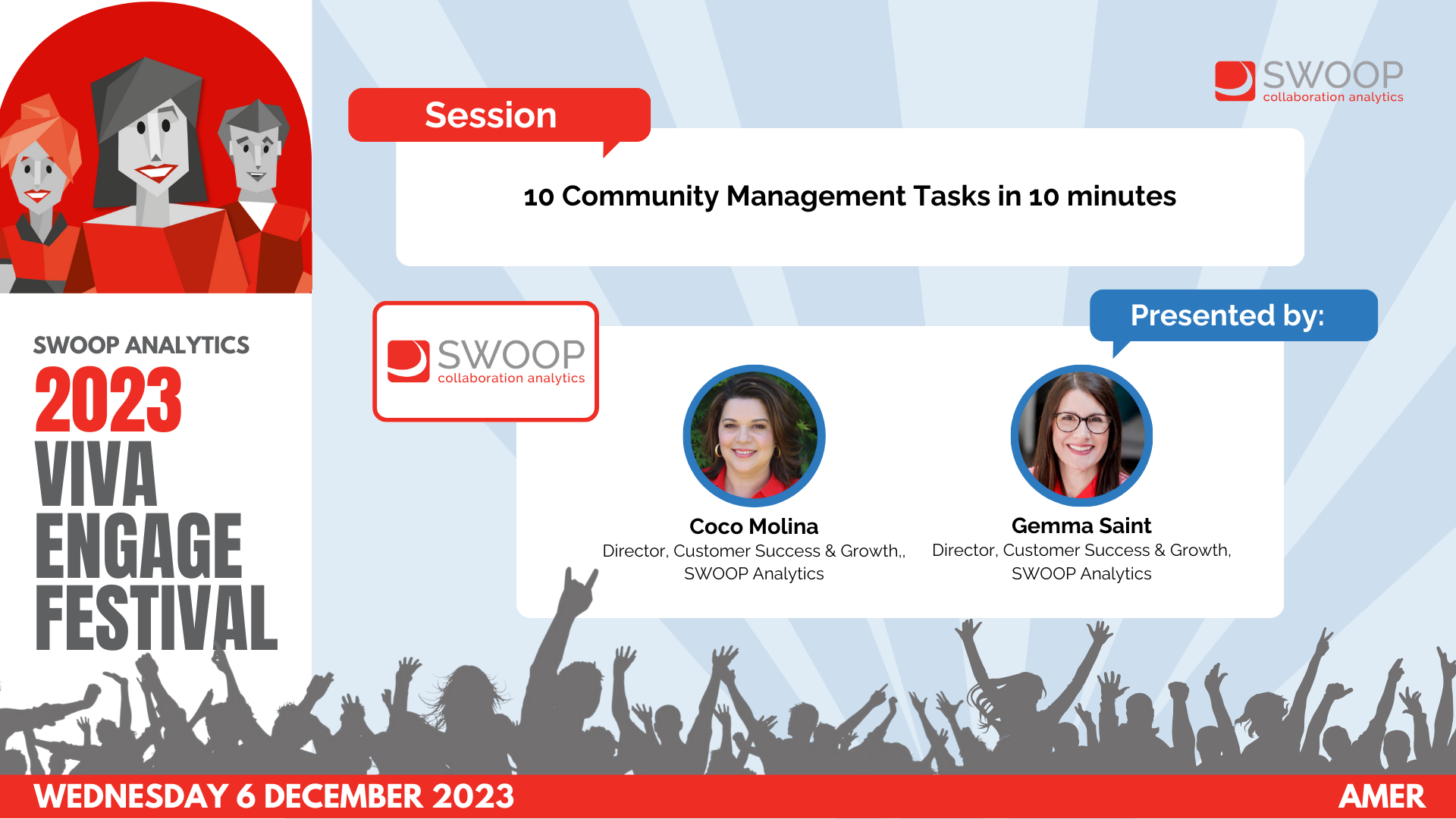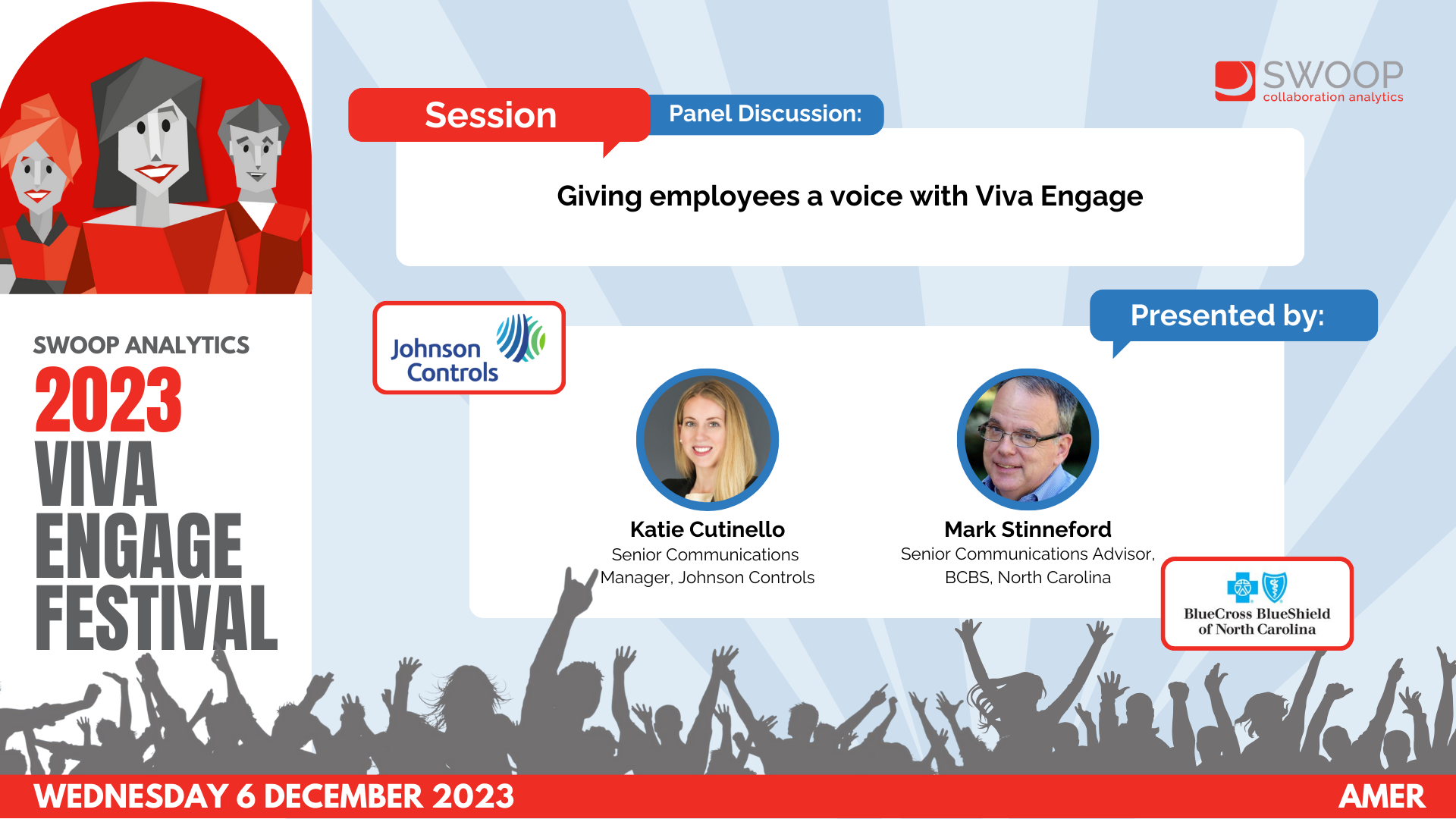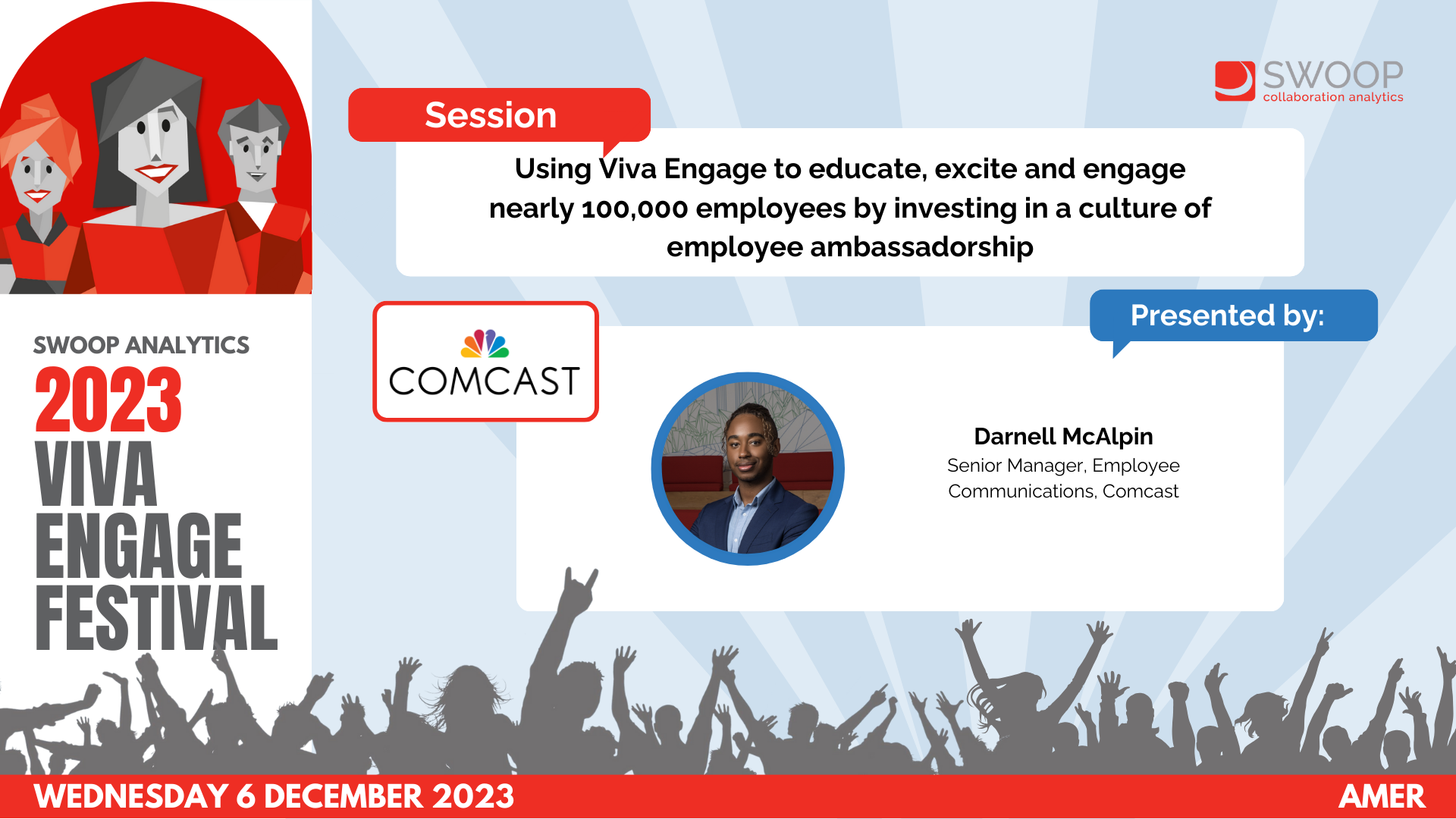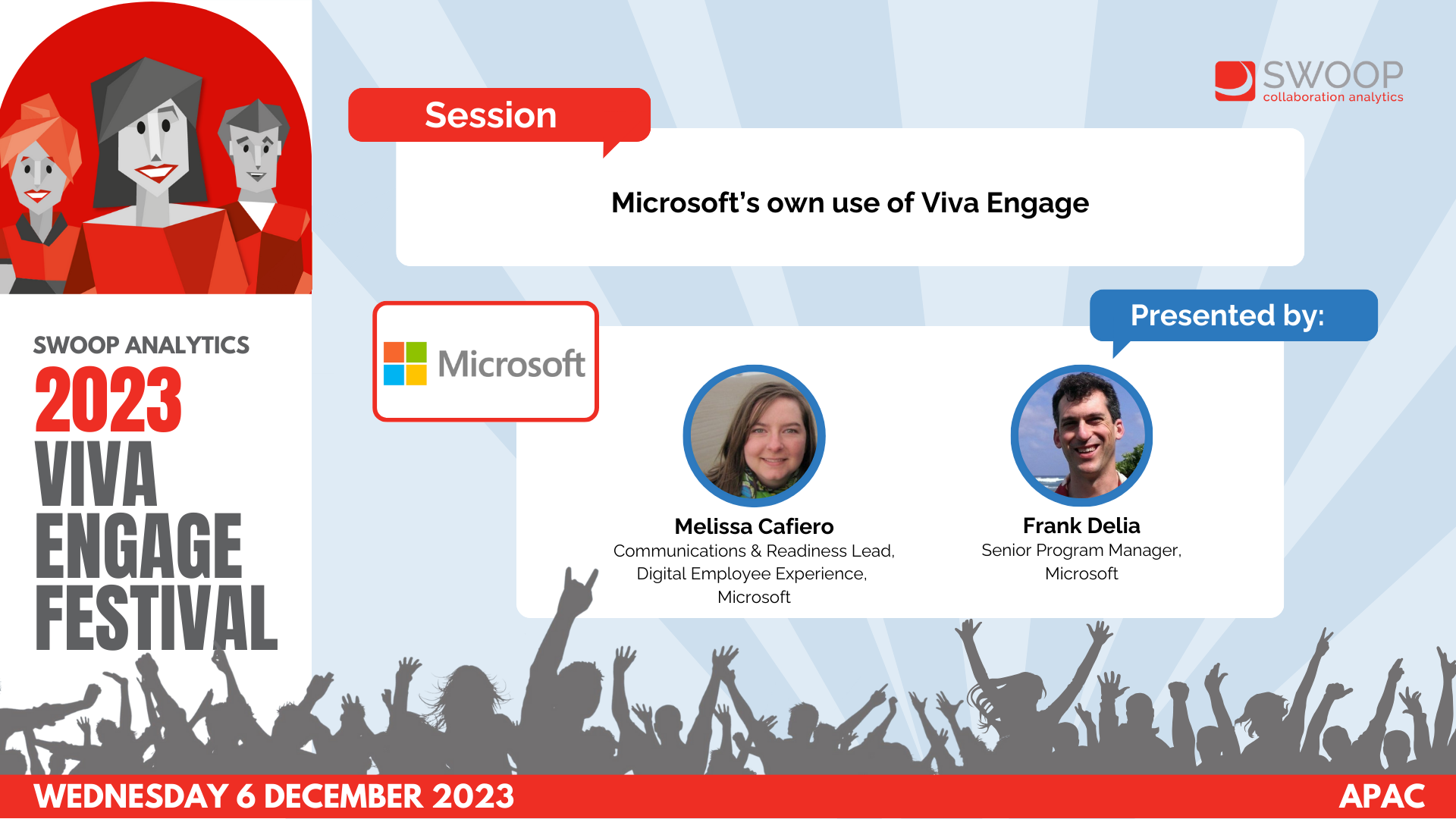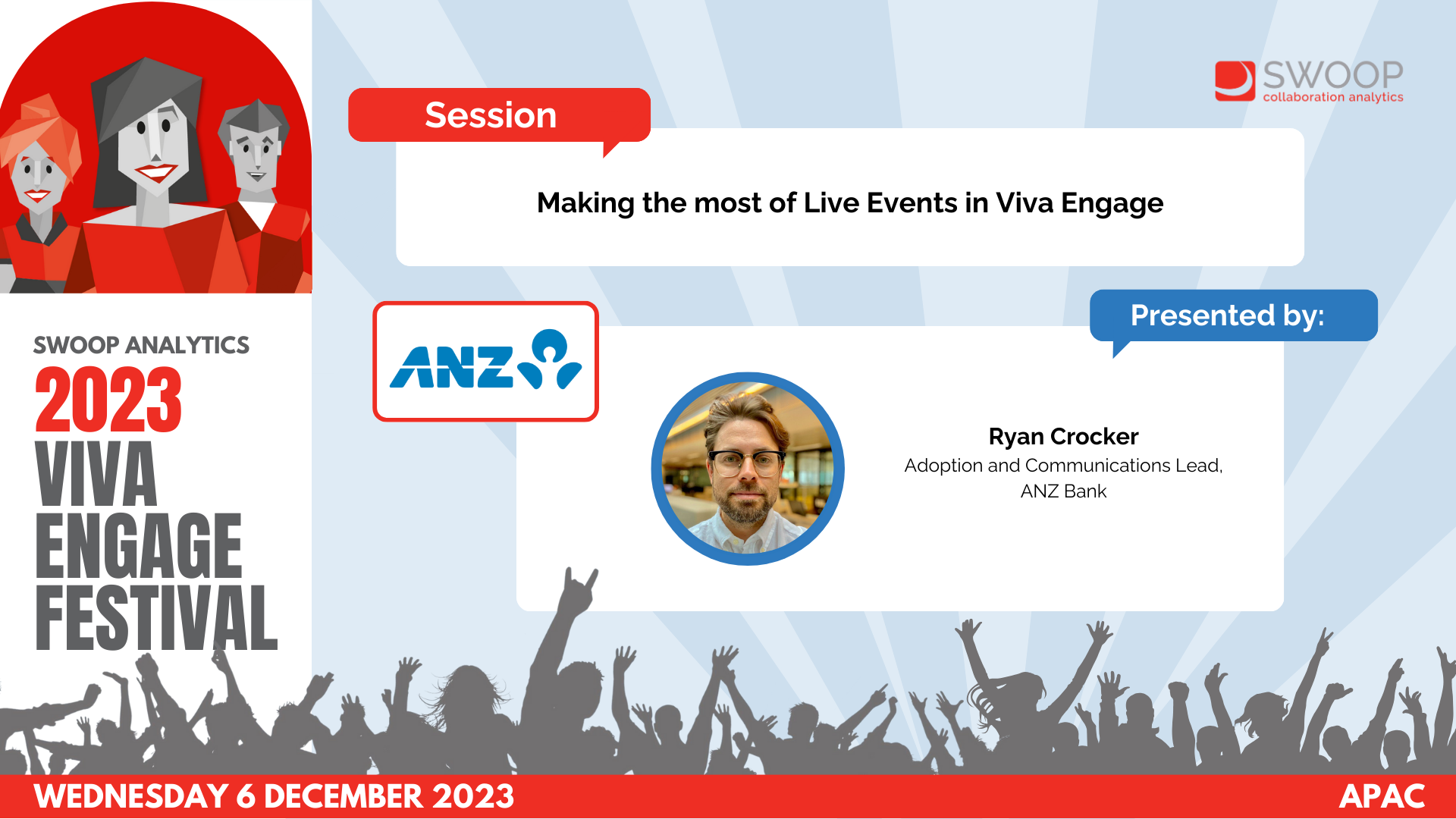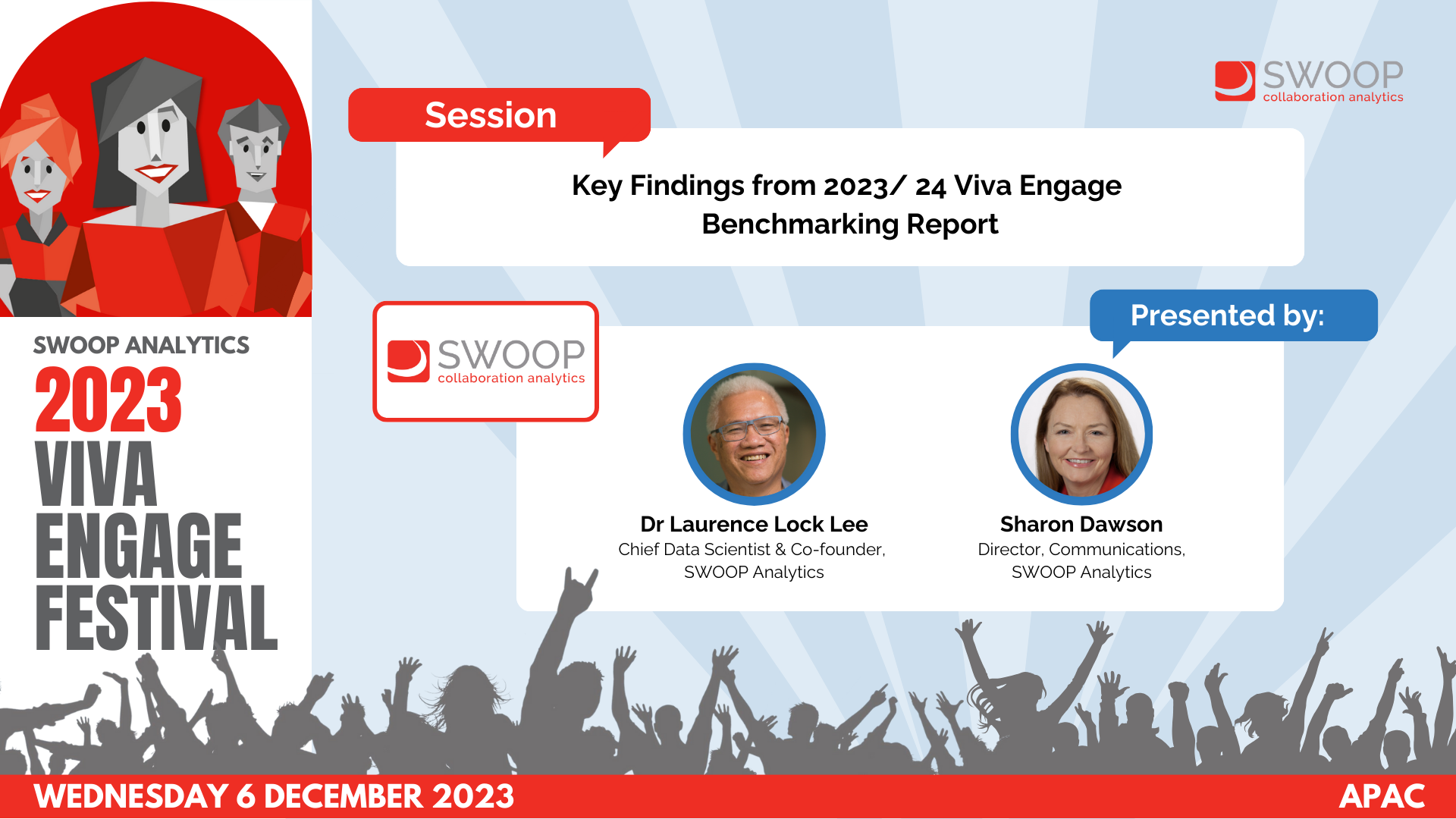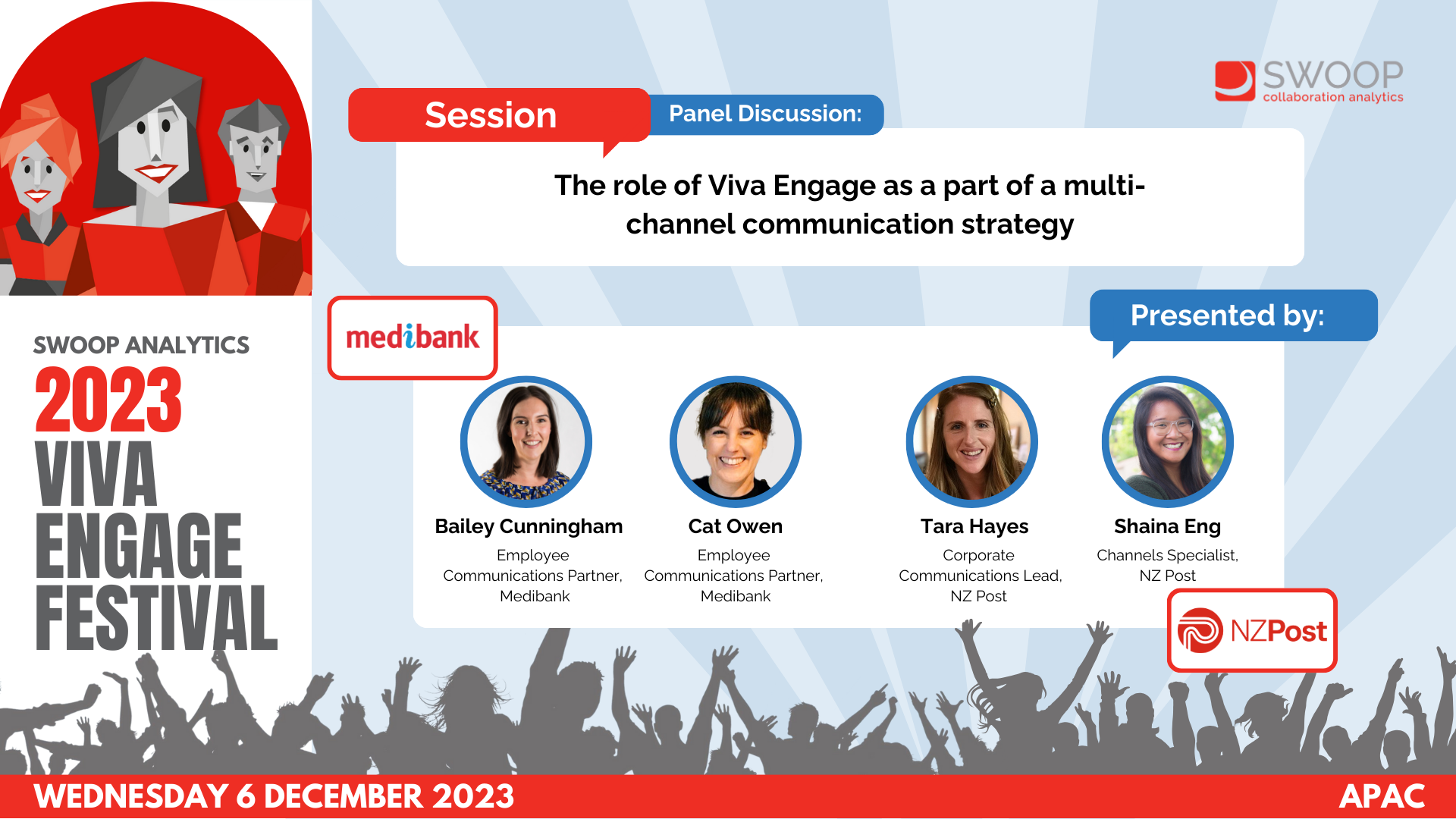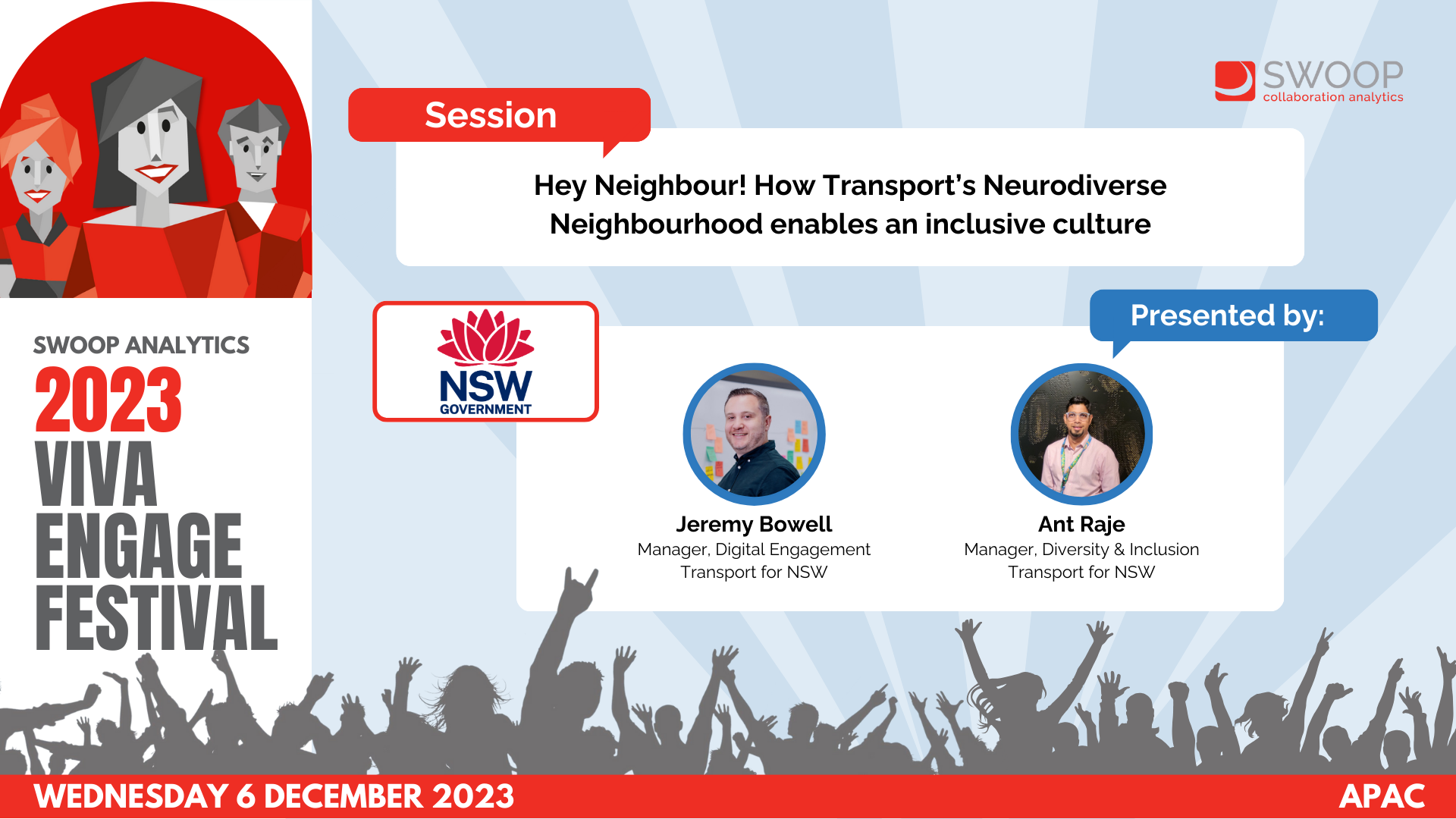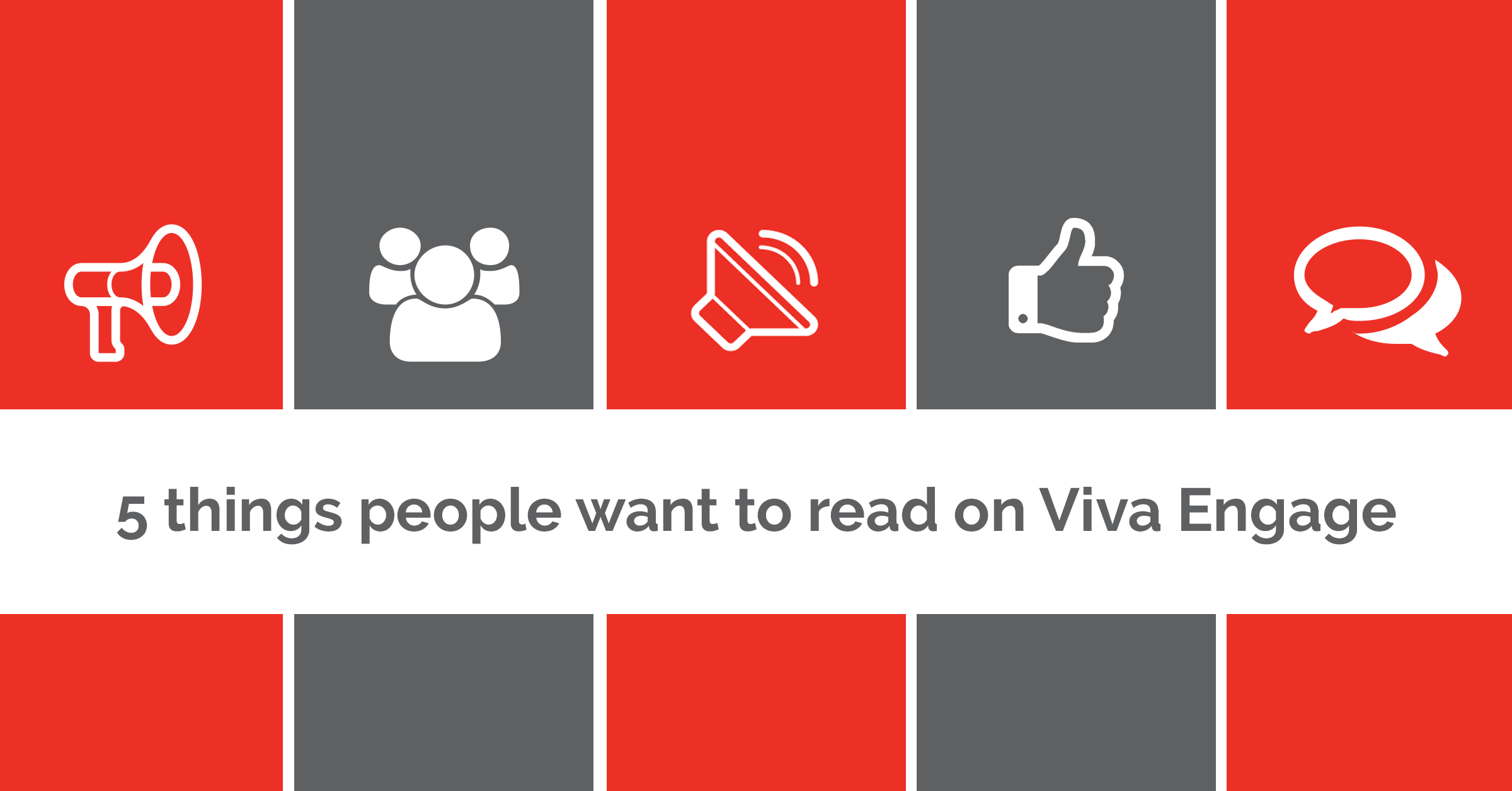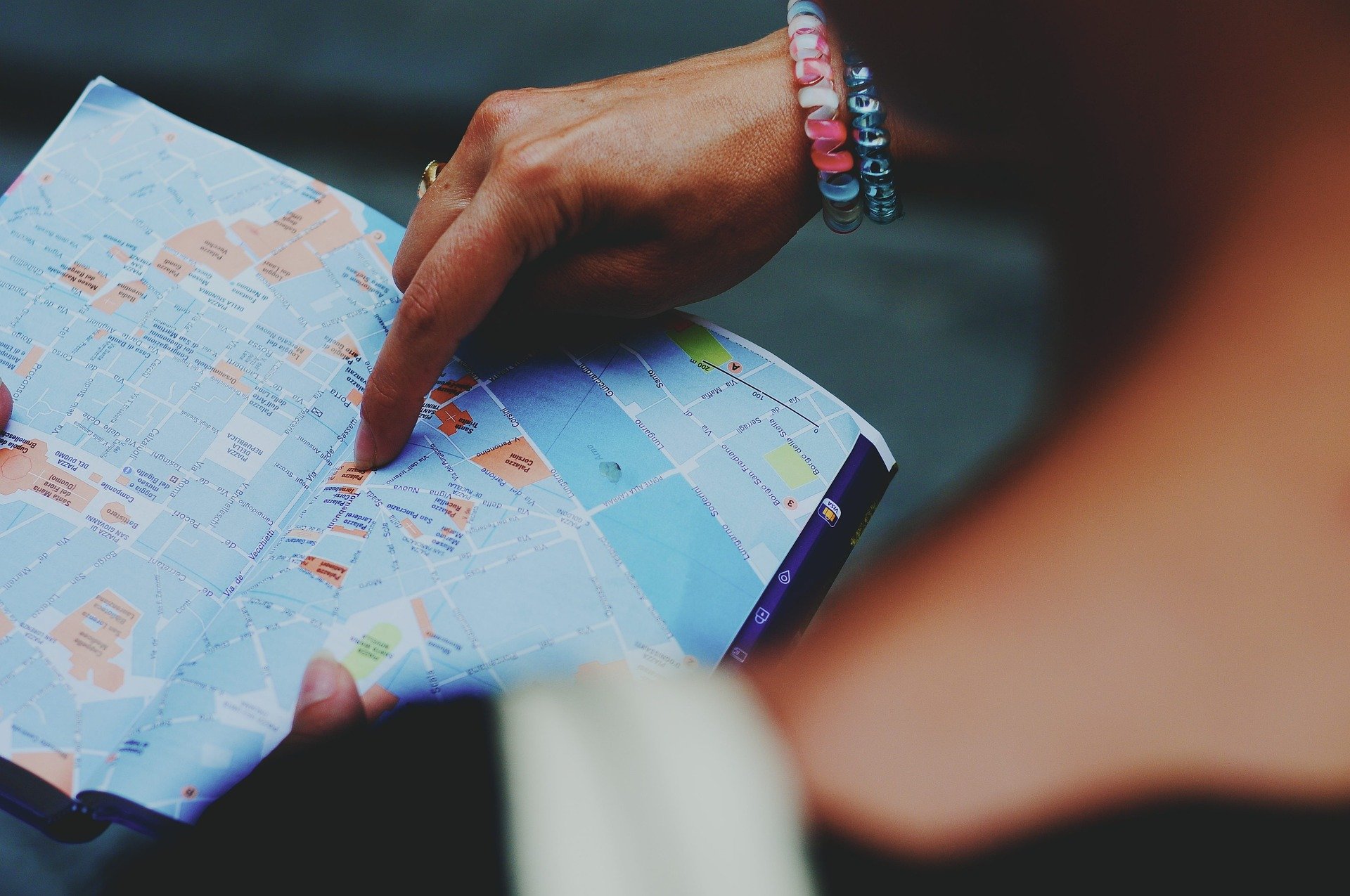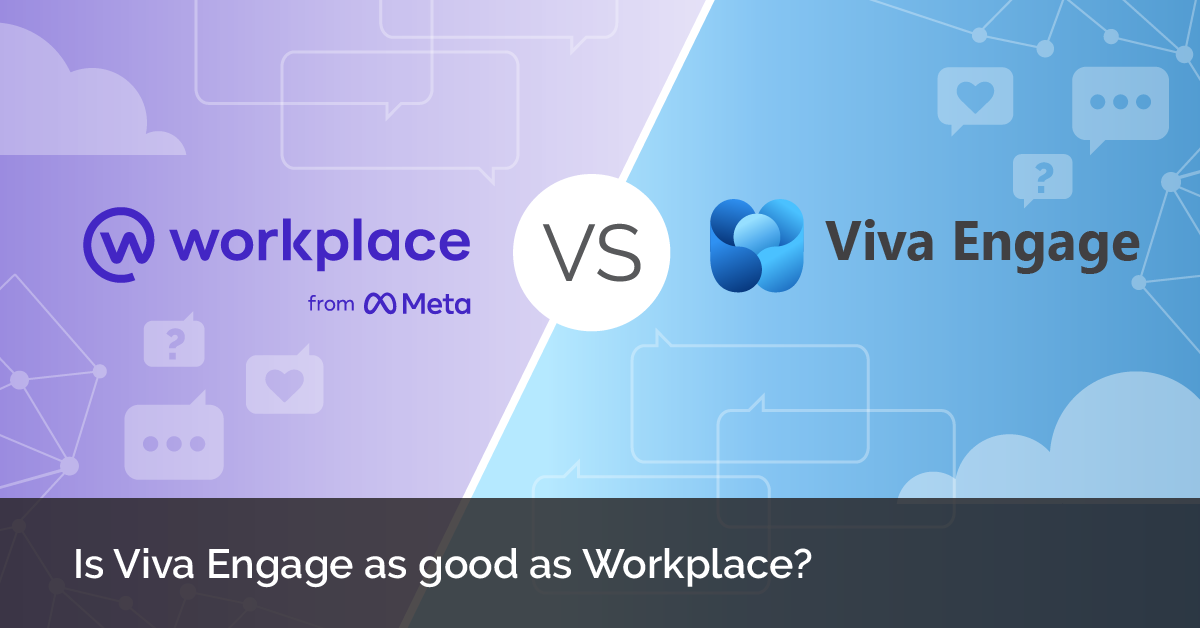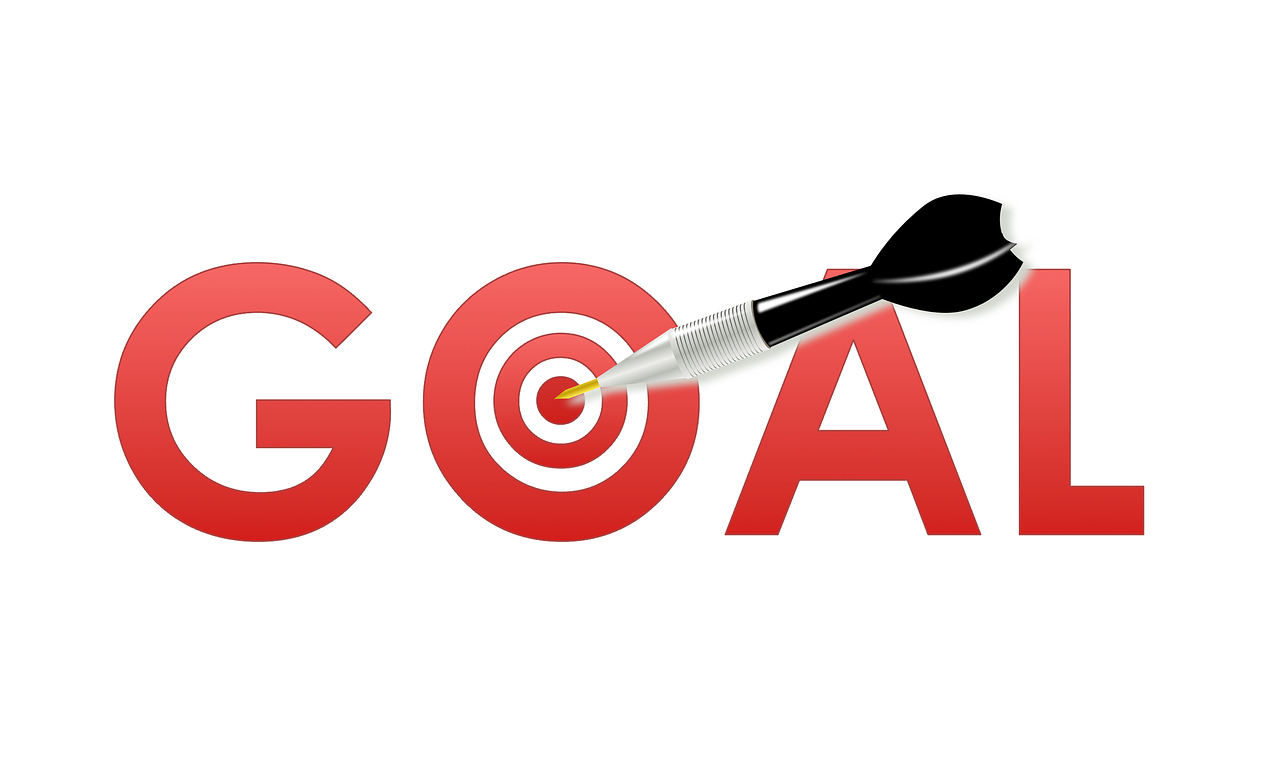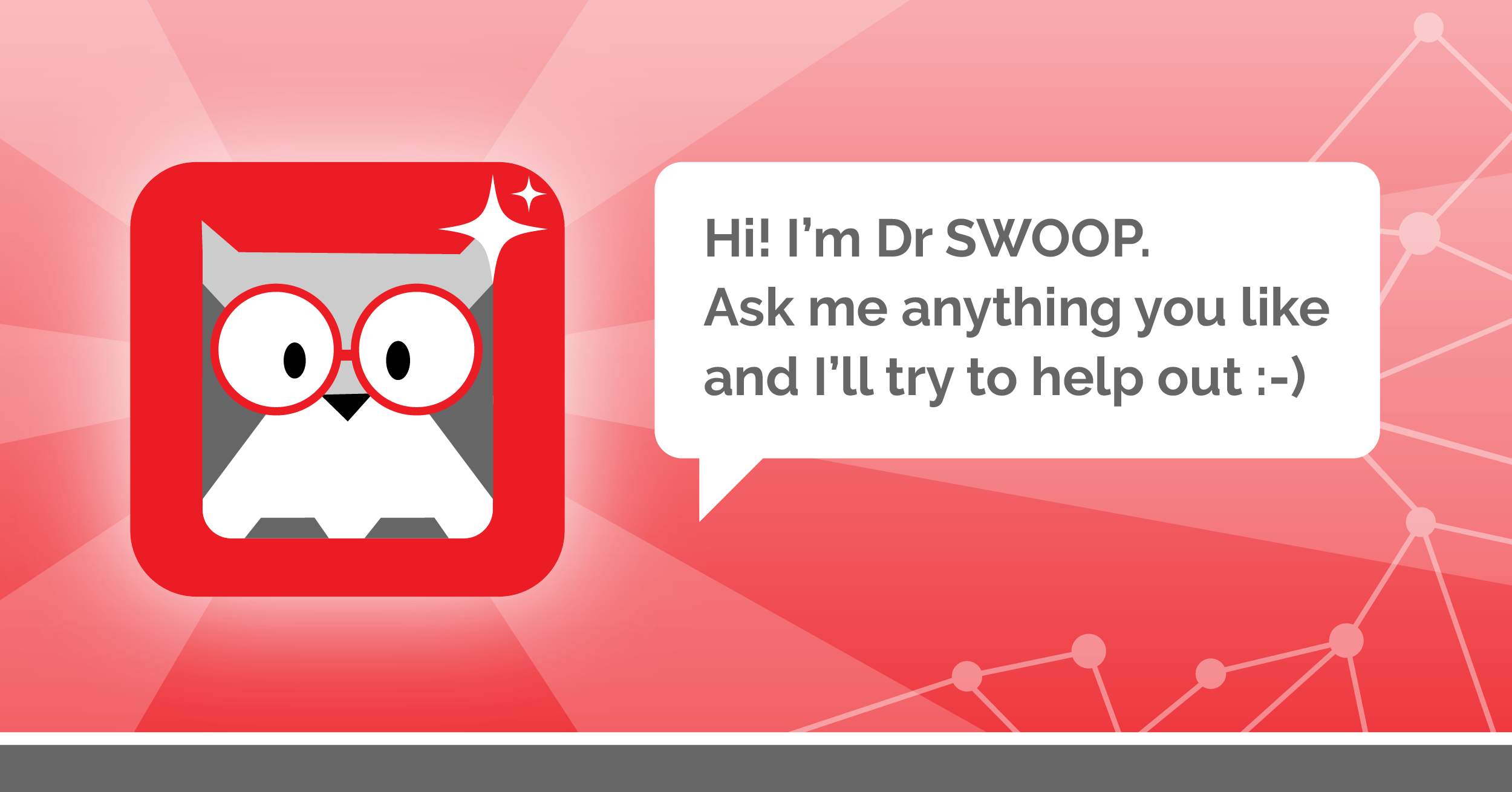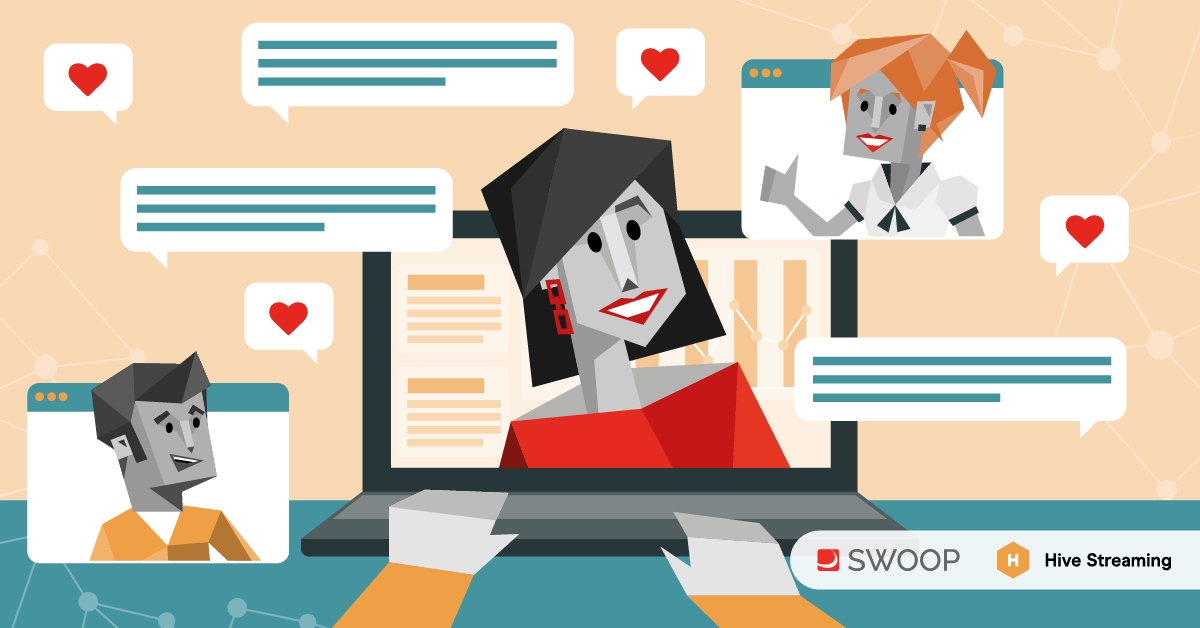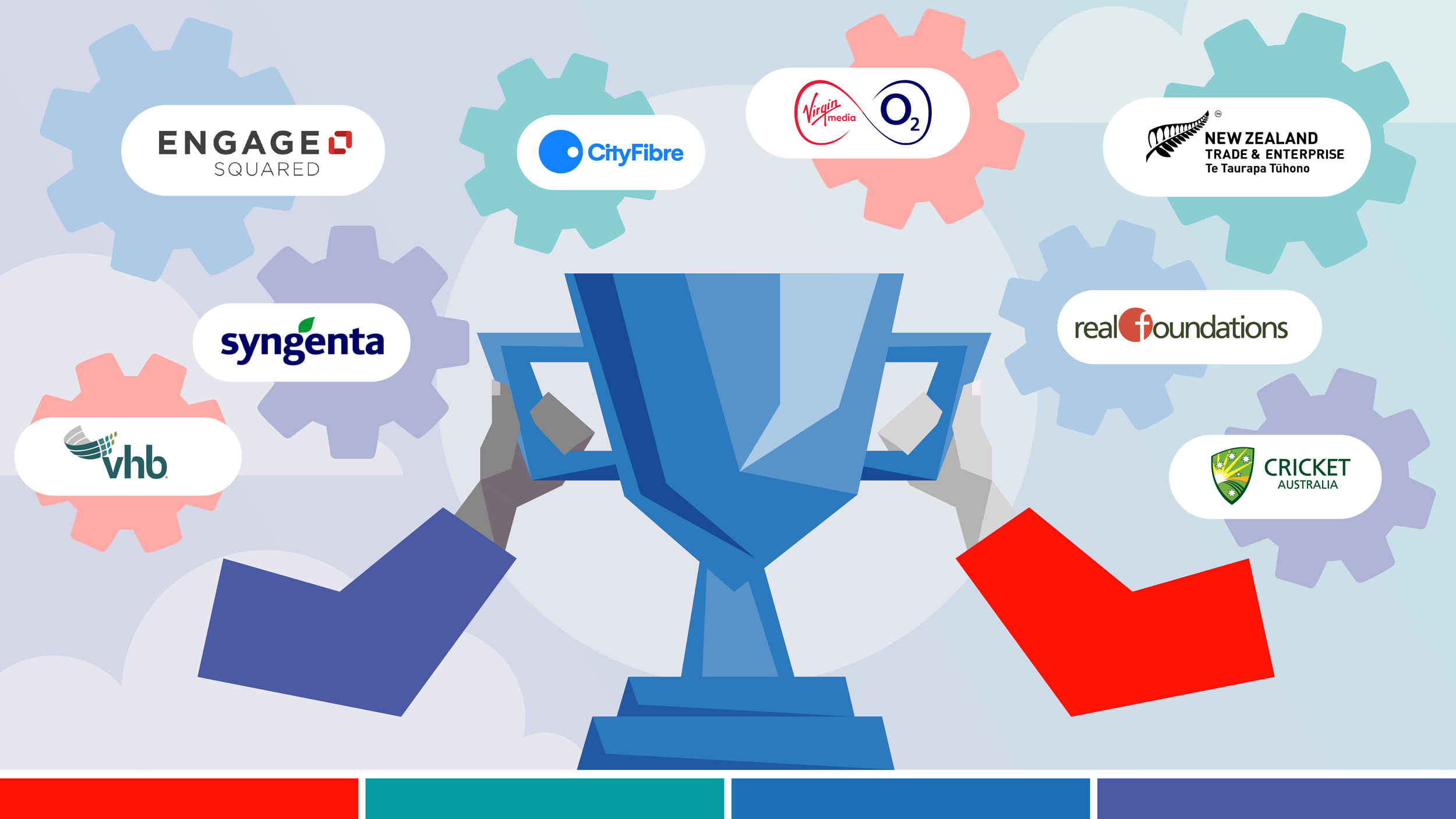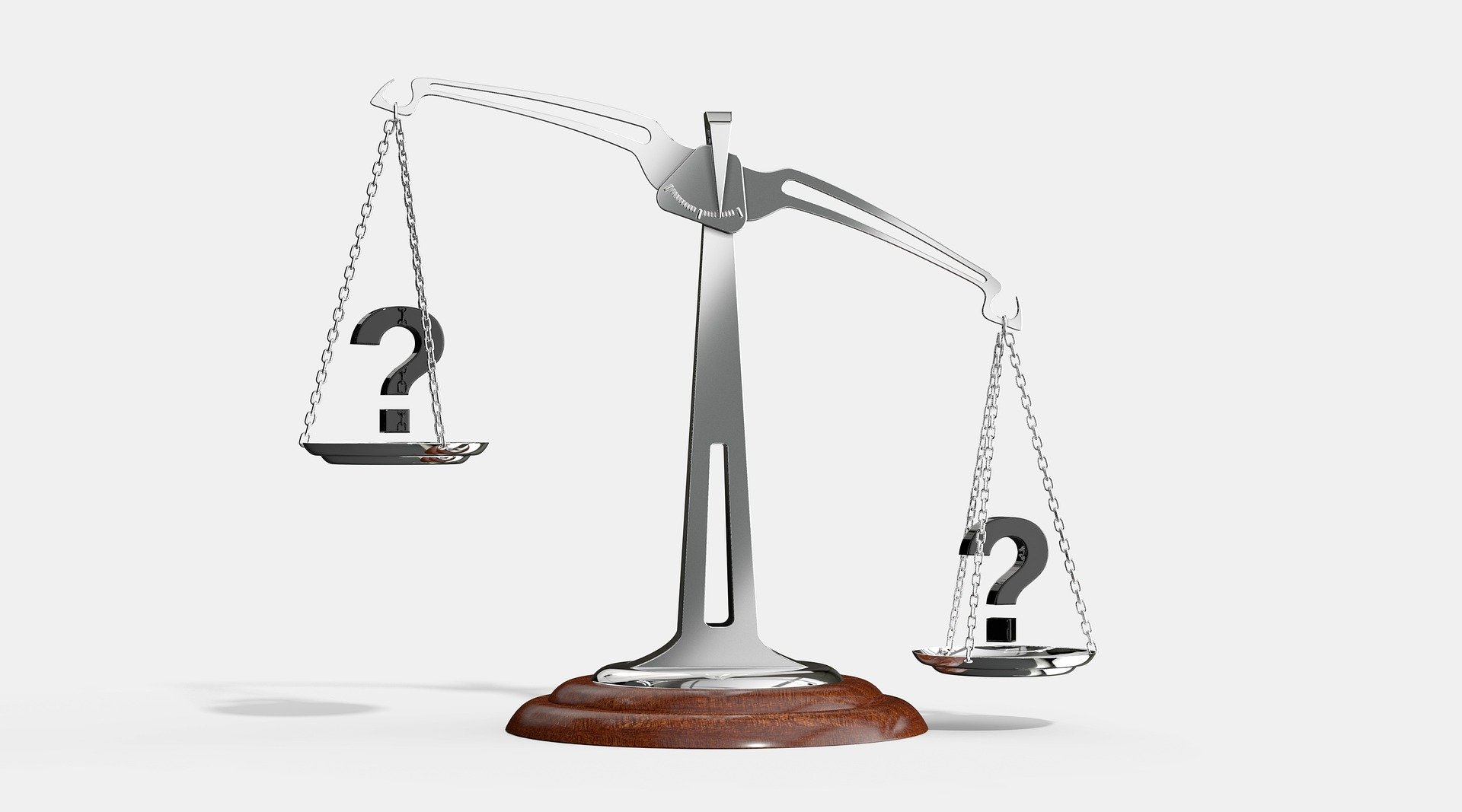Transport for NSW: Hey Neighbour! How Transport’s Neurodiverse Neighbourhood enables an inclusive culture
APAC | Viva Engage Festival 2023
Learn about Transport for NSW's Neurodiverse Neighbourhood which was established as a virtual community for neurodiverse colleagues and allies to share tips, strategies and lived experiences with each other.
-
And it's great to be here today talking about our neurodiverse neighbourhood community. So I'll start with a couple of introductions. So my name is Jeremy Bowell and I'm the manager of digital engagement at Transport, part of our internal strategic comms function.
And I'm speaking to you today from the Gadigal lands of the Eora Nation. Hello everyone. This is Ant Rajay.
I'm the manager for inclusion and diversity at Transport. And I look after the disability and the multicultural portfolio. And I'm myself ADHD and deaf in my right ear and in Indian background.
So I try to bring in my lived experience into my role. And I also want to acknowledge that I'm dialing in from the lands of the Gadigal people today. And I pay respects to all the elders and I welcome any Aboriginal or Torres Strait Islander colleagues who are joining us today.
Thanks Ant. So today we're going to run through a little bit about us as an organisation, our inclusion and diversity portfolio and how that really feeds into the neurodiverse neighbourhood. And we'll give you some key takeaways, the lessons that we've learnt along the way, and then we'll have some time for questions.
So. Transport is a very big organisation. You may know us from public transport, but we're also responsible for things like active transport, which is cycling and point to point.
So your taxis and rideshare, roads and waterways are another big part of our portfolio. Transport infrastructure, which is in the news at the moment, not necessarily for all the right reasons. We have a very diverse employee base.
We have a lot of wired employees connected to computers all day and unwired employees, people who are out in the field doing work. And that workforce is spread right across New South Wales, all 25,000 out of us from the far north to the south of New South Wales. Lots of frontline employees and the enablement function that Ant and I are part of that sits behind that.
So why did we want to go down the Veebra and Gage path? Well, for us, having such a diverse and geographically spread workforce meant that we needed something that we could bring everybody together. And we did. We were split across a couple of different platforms.
We had a workplace. Biomessor is one of our platforms. We had Veebra and Gage, which was just used sporadically.
So we had a program whereby which we migrated all of our workforce by Meta employees over to Veebra and Gage. So we could have a single platform for everybody, which would enable us to achieve some of our communications goals. Things like having fewer emails clogging up people's inboxes, fewer newsletters, a far more responsive way to communicate with our people.
The opportunity to crowdsource FAQs and connect our people to subject matter experts. We've already seen some great examples of that on Veebra and Gage. For example, we had some of our drone crews who work on the Sydney Harbour Bridge connect with drone crews who use drones to assess bridges in regional areas.
Teams that hadn't met each other before who met through Veebra and Gage and were then able to start knowledge sharing. Another key thing for us is really humanising our leadership. So breaking down those barriers between our leadership and our frontline.
I'm having a more authentic and personal communications. So from the heart, short and sharp, less of that corporate style messaging and also enabling our leaders to be more responsive to ongoing employee feedback and ideas. So now I'm going to hand over to Ant to talk a bit more about our inclusion, diversity and wellbeing at Transport.
Thank you. Thank you, Jeremy. So for us here at Transport, I think the key strategy for, we are part of the inclusion, diversity and wellbeing team.
And our strategic purpose is to enable an inclusive workforce that is a positive, that creates a positive and a differentiated experience for the people of Transport. So we have three different areas or we call them portfolios. So one is inclusion and diversity.
So like I said, talking about disability, multiculturalism, gender equity and all those things come in that bucket. We have the reconciliation team. So we own and manage the stretch wrap across the organisation.
And we also have a wellbeing team that is dedicated around just the overall wellbeing initiatives, looking at employee burnout and the RUOK and the mental health first aid initiatives. Next slide, Jeremy. So the key purpose or the key foundational elements for our inclusion, diversity and wellbeing strategy are across these three areas, like we call them.
One is like how do we establish those foundations of inclusions? So basically, again, getting that purpose and our fundamentals right. How do we move from silos to communities? So like Jeremy was just saying, how do we connect people across the organisation to come and talk to each other? And how do we build a future workforce that finds that where everybody finds that they are included? And what we realised that Viva Engage was one of the best platforms for us to activate this strategy into practice because it helps us create that foundation. We can connect with different people on various topics of inclusion and diversity.
And because it is the future of the future of how people would operate and interact with each other. So we found that as to Jeremy's point, that using this platform also is a really good way for us to activate our strategy and again, to get people involved and having those open dialogues. And that's where the Neuro Diverse Neighbourhood, I guess, fits in well.
So I'll take you through the quick origin story because every superhero has an origin story. Our story goes like almost a year ago. It started with what we call it, and this is a term we love in our group, is with a brain fart.
And now you all know what a brain fart emoji looks like. So you're welcome. We basically were three neurodivergent individuals.
So I'm myself, ADHD, Jasmine on the image on the left, she's also probably autistic. And Stephen McKee on the far right is also probably autistic. We came together and we decided to kick off this Neuro Diverse Network in August last year in 2022.
And in case you're wondering, no, Osher is not part of our steering committee because he did not get a rose. So next slide, Jeremy. So what we first decided was that before we start and create our VivaEngage community, it was really important for us to, I guess, have a very clear and concise purpose that is easy to understand and for people to connect to and relate to.
We did not want to boil the ocean because if you know that neurodiversity is still a very new space, is constantly developing. A lot of people are not really sure about what it is and what it means. So we thought we first need to clearly articulate what our focus was.
And that's where the focus and the purpose statement came in was we wanted to use the VivaEngage community to provide a safe space for all our neurodivergent colleagues to share, educate, learn and connect. And for our neurotypical colleagues to learn and engage. So we didn't want it to be an exclusive group of only neurodivergent individuals.
We also wanted to get neurotypical individuals on the journey as well. And for us that the soup analytics dashboard has actually been like the guiding light because it has always helped us to understand if we are actually staying true to our purpose or not, or if we are deviating from our purpose. So looking at the dashboard, we've got our own personalized dashboard set up, which tells us that are we on the right track or not.
So that's really been very helpful to us. And as you know, that you can't improve or control what you can't measure. So that's where the analytics play is a really key part for us.
And again, like I said, given the sensitivity of the topic, we really needed to be on top of what was happening in the community. So the two key, I guess, attributes that I wanted to call out here is one on the bottom right was the persona for us because it was the catalyst persona because this was a thought starter. And it was our effort to basically be a bit of a thought leader in this space at transport because we've not had a network like this before.
We wanted to just be those catalysts to restart those discussions around neurodiversity. People start getting used to the term, they listen to it more often. So it was very important for us to kind of manage that overall persona for the community.
And we're actually happy that it's in that catalyst zone because that's what we've seen, that it's now actually triggering the right conversations across the network. And the other thing for us to focus was on the interactivity because, again, given the nature of the topic, it's not as fun as watching pets or food photos and stuff because this was some things could be like triggering and they can be serious topics that are being discussed here. We were really keen to see what the interactivity level was.
So, what we've observed across the network is that there's a lot of interaction between the neurodiverse network and the pet network. And what we found was it's really pleasing for us that in amongst all our communities over the one year that we've had it actually 1.5, the neurodiverse network is the second most interactive network for only second to the pets at transport. So people are loving the pet pictures, but people are also loving the conversation in our network.
So that's also been a very key driver for us to continue this work. Next slide, please. So what we've observed across the last one and a half years in our network is we've actually seen a very high interaction with long form posts.
And if you're a comms expert in the audience, you might know that that's actually really interesting. It kind of deviates from the norm where people want short, sharp, TikTok kind of style videos and 30 seconds of content and stuff. But here we've seen that people are writing authentic long posts because if you know, neurodivergent people love to hyper focus and then they overshare because that's just comes naturally to us.
But we've actually seen that that effort has been reciprocated in terms of how people are interacting. So they're actually reading the post, acknowledging someone's lived experience and then responding to it. We have seen a lot of open, honest and vulnerable conversations.
We've had people either share their disclosure or their diagnosis journey or the challenge they might have with their neurodivergent kids and what that journey has been like. So we've seen a lot of those and we have a few examples in the next slide. We've actually, in the last one and a half years, we actually had to do very little to zero moderation.
So we've never had an instance where we had to delete a post or reach out to a poster and say, hey, you cannot say that because everybody's been so respectful of each other's lived experience. And what we've realized is that has a really strong power. But what we've also learned is that is only enabled by some strong support mechanisms in place.
We have a few of us who are also mental health first aiders. So if someone responds to someone's post in a bit of an opposite way or they provide an opposite point of view, we tend to reach out to that person and just check in with them to see if they're feeling OK. Because we know that a lot of neurodivergent people also have rejection sensitivity.
So we need to make sure that if someone's presented an opposing point of view, that they're feeling OK. So we do a lot of that as well. I had just one example yesterday.
So when someone called out about discussions on labels and using labels to identify people and someone said that they did not agree with the point of view, then I had to just do a quick check in and to make sure that they're OK. So we realize the importance of having that support mechanisms for whatever your community is in place. And we've also had a lot of action focused discussions.
It's not just about discussions for the sake of discussions. We've had examples, and again, we'll show you one quickly, is where someone's post and a discussion resulted in a change in one of our recruitment process steps. So we actually took that conversation, converted that into an actionable item, and then actually presented that change back to the network members to show them that their conversations are actually important for us to make a positive difference in the workplace.
Next slide, please. So we've had a lot of discussions on this. This is a lot of text, but basically what it is, is just examples of some raw, vulnerable stories of authentic, genuine lived experiences, which have generated a lot of respectful curiosity amongst our members.
So we've had a lot of discussions on this. We've had a lot of discussions on this. Next slide, please.
So we've had a lot of discussions on this. This is a lot of text, but basically what it is, is just examples of some raw, vulnerable stories of authentic, genuine lived experiences, which have generated a lot of respectful curiosity amongst our members to show them that their conversations are actually important for us to make a positive difference in the workplace. Next slide, please.
So we've had a lot of discussions on this. This is a lot of text, but basically what it is, is just examples of some raw, vulnerable stories of authentic, genuine lived experiences, which have generated a lot of respectful curiosity amongst our members to show them that their conversations are actually important for us to make a positive difference in the workplace. Next slide, please.
So we've had a lot of discussions on this. This is a lot of text, but basically what it is, is just examples of some raw, vulnerable stories of authentic, genuine lived experiences, which have generated a lot of respectful curiosity amongst our members to show them that their conversations are actually important for us to make a positive difference in the workplace. Next slide, please.
So we've had a lot of discussions on this. This is a lot of text, but basically what it is, is just examples of some raw, vulnerable stories of authentic, genuine lived experiences, which have generated a lot of respectful curiosity amongst our members to show them that their conversations are actually important for us to make a positive difference in the workplace. Next slide, please.
So we've had a lot of discussions on this. This is a lot of text, but basically what it is, is just examples of some raw, vulnerable stories of authentic, genuine lived experiences, which have generated a lot of respectful curiosity amongst our members to show them that their conversations are actually important for us to make a positive difference in the workplace. Asant, you are actually coming back to your purpose as well.
So coming back to the purpose and helping us to stay true to our purpose. Asant, you are actually coming back to your purpose and helping us to stay true to our purpose. And you can see the results here.
Next slide, please. And I think I'm handing over back to Jeremy. Thanks, Ant.
So we've learned a lot of lessons along the way and we've tried to distill some of those key lessons. So the first one is don't be afraid to jump in and start your community. I mean, people will help define and refine the purpose along the way.
Be guided by your organisation's values so you can live your organisation's values. That was key for us to make sure that we were aligned to where we wanted to go as an organisation and that we reflected that in the way we managed the communities. Give people the space to be their authentic selves at work.
That's absolutely crucial. We've seen through this community and other communities that it's had a really positive impact on well-being and productivity and it makes people feel included, particularly if you're working in a regional space where you don't necessarily have the in-person interaction with other people, or if you're able to connect with your tribe as people have been able to do here. It's something that I've heard at a lot of presentations and it's something that we've adopted as a bit of a mantra at Transport, which is the idea of purpose over polish.
We find that not being too obsessed in terms of what content looks like and really going for authentic and candid content really enables that genuine engagement. And finally, in the immortal words of Nike, just do it. Just jump in and get started.
So that brings us to the end of our presentation and now we'd like to throw to some questions. Excellent. Thank you so much, Jeremy and Ant.
Thank you for sharing the story. Now we have had a bit of interest in the Q&A, so I have a few questions from Dana and I think some of these questions are related to Jeremy when you spoke towards the start of the presentation about moving across from Workplace to Viva Engage. So the first question is, how long did it take you to embed the platform and see this level of collaboration? That's a great question.
It did take us quite some time because a really key part of migration activity for us is making sure that a lot of our stakeholders who had been using Workplace for a long time, they had established their communities, they had established their followings. Now it's a big ask to get somebody to jump across to a new platform. So the stakeholder engagement piece was really big for us.
It took us about 18 months all up from start to finish. But the net result of taking the time and really hand-holding those stakeholders along the way, showing them a lot of love, and migrating content, was that some of the potentially more reluctant stakeholders are now some of the biggest users of Viva Engage. That's great.
And then just as a follow-up question to that as well, did Viva Engage replace other channels and did that create a communications gap for people who may not use the platform? It hasn't replaced other channels per se. And we are mindful of the fact that not everybody is looking at it all the time, probably not as much as Ant and I love spending time on the platform. So it hasn't necessarily replaced other channels.
But what we have been able to do is reduce the volume of content going out through other channels. We use other channels to direct people to conversations on Viva Engage. So we have been able to reduce the volume of content that goes through other channels, and therefore the amount of noise that our people are exposed to.
Awesome. Thanks, Jeremy. And then we had a question from Michael as well.
I'll just read out this full question at the moment. So there are some good folks in our organization looking to set up a neurodiverse network at the moment. They're currently going through some foundational exercises, charter creation, etc.
But I'd love to know if there are any collateral or learnings that I can share with them after this session. Now, I know you had some of your key learnings, but wondering if there's anything else you'd like to share amongst perhaps maybe, I'm not sure, Ant or... I can, I guess, add to that. Like I said, we initially just spent more of our time, like I said, on just getting the purpose kind of locked in.
And once we had the purpose done, we just thought we'll just start with it and see how we go, because we wanted to test the waters in terms of what was the awareness level, what was the maturity of the audience in terms of understanding these topics. So we just, I think I remember we created one post to say what the purpose of our community was, and then just straight went into RST or rejection sensitive dysphoria. And I was just going to say, if you do contact us outside of this, I'm happy to send through those articles, because a lot of them are generic in nature as well.
So I'm happy to share some of those articles that we've posted and feel free to use them as a form of just creating that initial engagement. What we've also followed then up with is we then have had live events or panel events where we open it for everyone to attend, where people with lived experience of neurodivergence share their experience, but then have those recordings and everything then again available on the VivaEngage community. So that's their one-stop shop for all their resources, so they can come back to it.
So that also brings them back. So yeah, happy if you reach out to us, happy to share our resources because they are. Awesome, and thank you for being so open to sharing these things too.
It's a part of the reason why we love bringing together this community, whether it's internal comms or if you're a community manager, we find people are so open to sharing, which is wonderful. And Ant, for your community, did you have dedicated moderators? Interesting question. Not really, but these are the three founders that you saw.
We just started doing things and we suddenly then got interest from other people who then wanted to come and post and share a Hyperfocus Friday idea. So we've kind of crowdsourced it and kept it open. And we thought, I mean, initially we did realize we're probably taking a risk here, but what we realized is that again, through that respectful curiosity of getting to know something from a very genuine and authentic point of view, that's really helped us and people have been open to sharing their stories.
So no, we do not have dedicated moderators, but we always keep an eye out. Like I said, I spotted a response the other day, which I thought might actually trigger the original poster. So I then reached out to them, made sure they're okay.
And that we've done as a community pretty well as well. And we even had other readers reach out to other posters and just check in and say that that really resonated with me. Thanks for sharing.
So it's become very organic. Excellent. And I can perhaps touch on moderation as a whole, if you like.
We do have a moderation panel in place, but our approach to transport is extremely light touch. We do have some guidelines in place, but our view is people should be able to share unvarnished opinions. And as long as they don't breach any of our code of conduct rules, then we'll generally leave conversations in place or step in to make sure people know that conversations are visible if they are potentially escalating.
But we have a moderation panel in place as well, where if there is a potentially contentious post, we can crowdsource a decision on how we want to treat that. That's a great insight. And perhaps turning back to where you're talking a bit about the move from Workplace to Viva Engage, do you have any challenges with IT or governance teams at all? We didn't have any challenges around IT.
IT were very supportive, particularly given that, you know, given the stringent rules around platforms we can use in government and, you know, all the really fun stuff like where data is hosted, they were very keen for us to get over to Viva Engage. And in terms of the governance structure, we established the governance guidelines in consultation with the areas of the business that were moving over to Viva Engage. So there was no imposition of the new sort of, you know, regime or guidelines on people.
We tried to make the transition as frictionless as possible. And I know you mentioned, you know, you did briefly mention about migrating data, but we just have a question here from Gareth, just out of curiosity. If you did migrate data, how many months of data, how many posts did you migrate across? That's a good question.
So it wasn't applied universally. It was just applied to the areas of the business that requested it, which also helped reduce the costs of data migration. I think it was at least 12 months of data that we migrated across, but we have also retained a couple of licenses on workplace for admins.
So people want to retrieve things that perhaps weren't migrated. We still have the capability to do that. And do you hold any, maybe Ant, for the neurodiverse network, do you hold any live events in that community at all? So I think, yeah, we do organize live events, but what happened was when we tried using the Viva Engage live event functionality to run some, the feedback we got from our neurodiverse neighborhood members was that it was not very accessible and there were some challenges.
And mostly it is, I think, because not for the platform, but just for the adoption. So the speed of adoption and stuff and the way the posts would come up as questions, they were finding it very distracting. So based on that feedback around the accessibility of an event, because we wanted to focus more on the, I guess, the discussions, we moved these events to Teams, but then we make sure that we record them, they are transcribed, they've got a transcript running with them.
And we then share an accessible version of the event back on our Viva Engage community. But yes, through the community's feedback, we chose Teams over doing a live Viva Engage event, just because of an accessibility point of view. And if anyone is interested in Viva Engage live events, we do have a session later on today with Ryan from ANZ.
He's got some really good insights to share too. We've got a few more minutes before we'll wrap up this Q&A portion. Out of curiosity, have you noticed any difference in the engagement on Viva Engage versus what you saw on Workplace? Have you noticed an improvement? What does that look like? So we have noticed an improvement, particularly since the last, I guess, Hangs On to Workplace migrated over.
They did tend to be the most active users of Workplace, therefore they were the most reluctant to migrate to a new platform. And we have seen, you know, significant rise in engagement, particularly in some of those communities that are dedicated to specific areas of the business. And we've seen that then feed into some of our larger communities like our transport community and some of the special interest communities that we have as well.
Now, this is probably quite a big question to leave for the last few minutes, but what are your plans for the phase around leadership engagement? Oh, that is a very good question. Leadership engagement is, we find it a bit of a tricky one because it's really refined and I'd be very keen to hear how other people in the chat find it as well. Often it comes down to the personality of individual leaders and the behaviours modelled by leaders.
We've been quite lucky in that we had a new secretary, a new head of transport come on board a few months ago. So part of our strategy was to engage with him early, get him to understand the value of Viva Engage and to establish his presence on the platform, which to his credit, he does himself. He doesn't have people posting on his behalf, which is brilliant.
We really drove home the importance not just of posting, but also engaging with employees on the platform. And he's been really great at modelling that behaviour, which then has that effect of getting other leaders to start modelling that behaviour as well. In terms of our plans of what we want to do moving forward, one thing that I'm keen to do is to drive a bit of healthy competition amongst our top leadership cohort, which we call the L100, our top 100 leaders, by using the benchmarking capabilities in SWOOP to set up a bit of a leaderboard.
And so our top leaders can sit and have a bit of healthy competition to see who's driving the best engagement on the platform. It's always good, isn't it? I know we've got a few, oh, sorry, Ant. I just want to add on that, especially from a neurodiverse neighbourhood perspective.
So our chief people officer is also the exec sponsor for our disability strategy as well. And recently we'd had an event and stuff, and then we were like posting about the feedback about the event on Viva Engage. And then she actually, in one of the comments, she shared her personal experience through a lived experience of a family member, how she's kind of navigating, understanding neurodiversity and stuff.
And that again showed that the fact that she was being authentic, caring, and then she came from a point of lived experience. So in the neurodiverse neighbourhood, we are taking an inclusion diversity overall in our team. We take the storytelling approach where we try to learn from people's lived experience and listen to their stories.
And that's what our exec sponsor, Tracy Taylor, she does it really well. And that's why we've seen like in this space, we get a very good engagement every time. And every, like during the World Autism Awareness Month or be it the ADHD Awareness Month, she always wants to have a post out there and to remind people of her story.
And that gives us a really good engagement there. So we're kind of lucky in that way. Fantastic.

